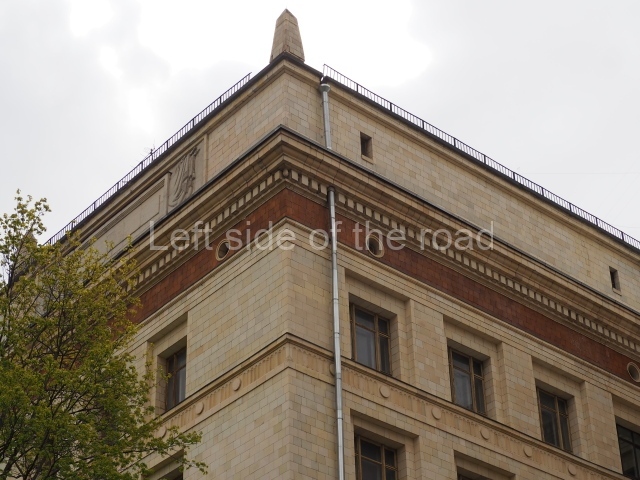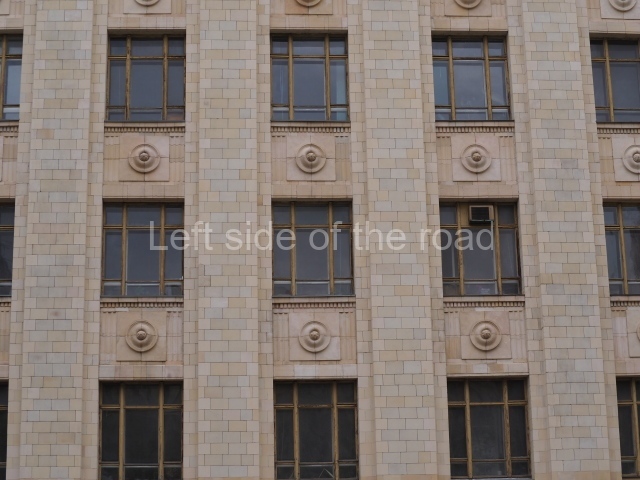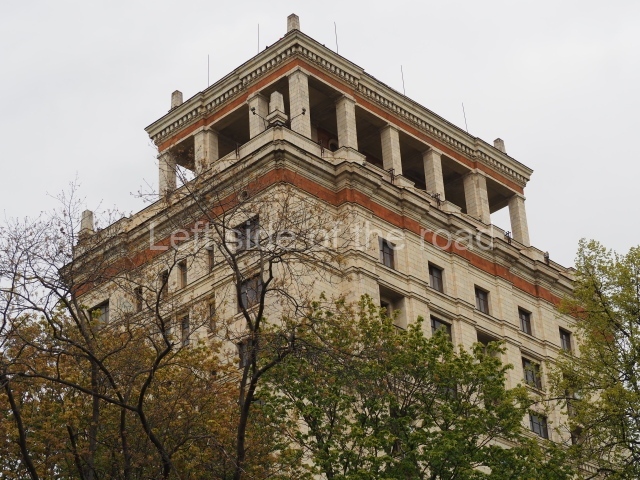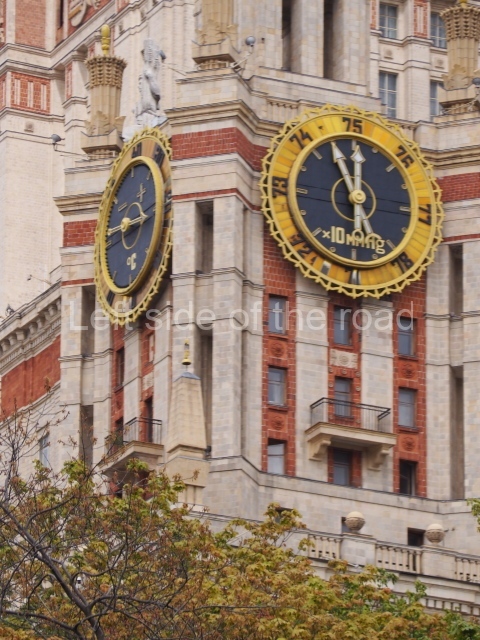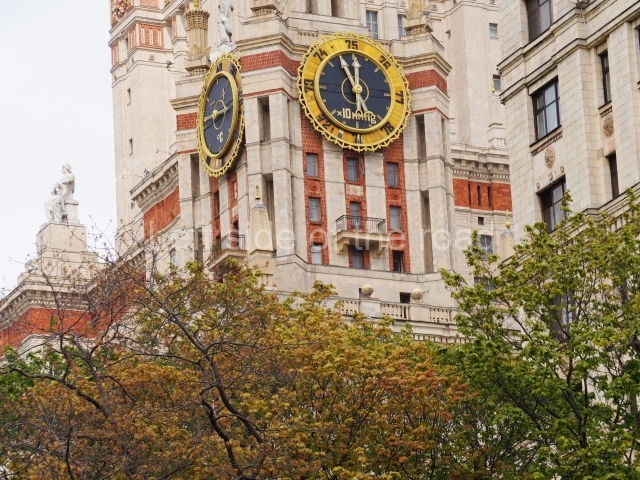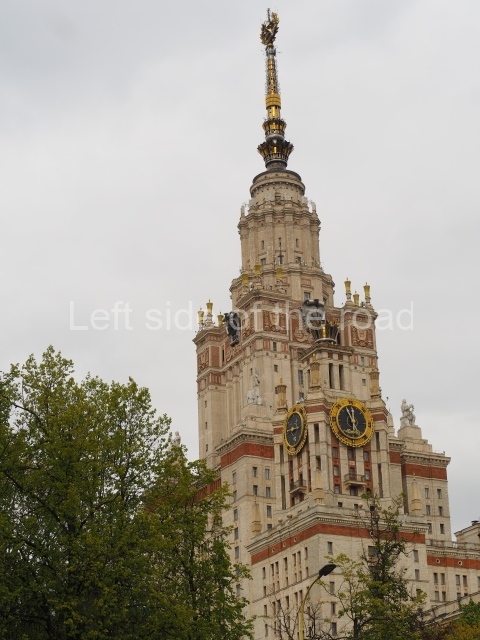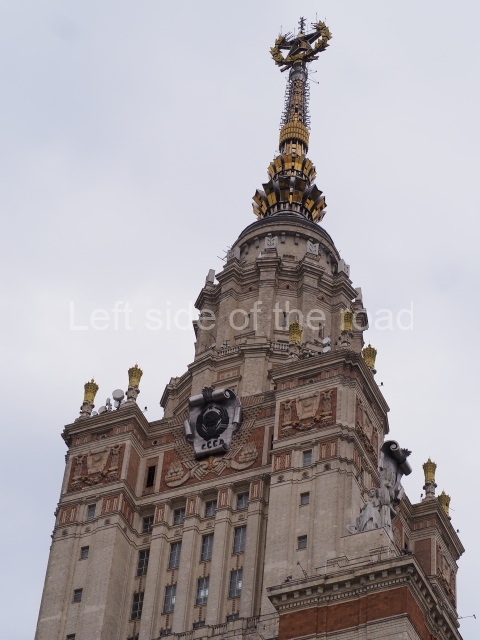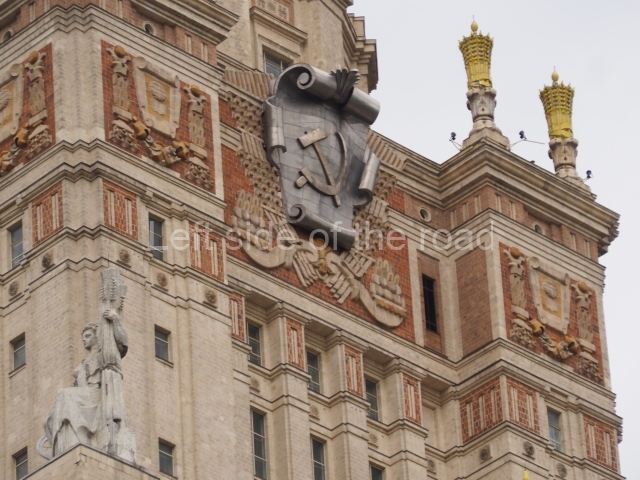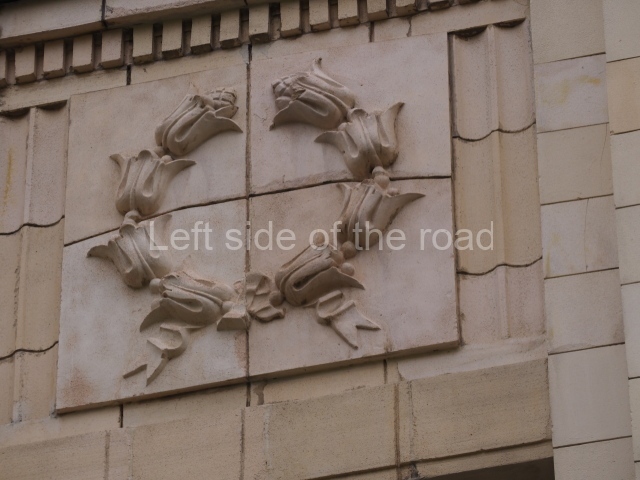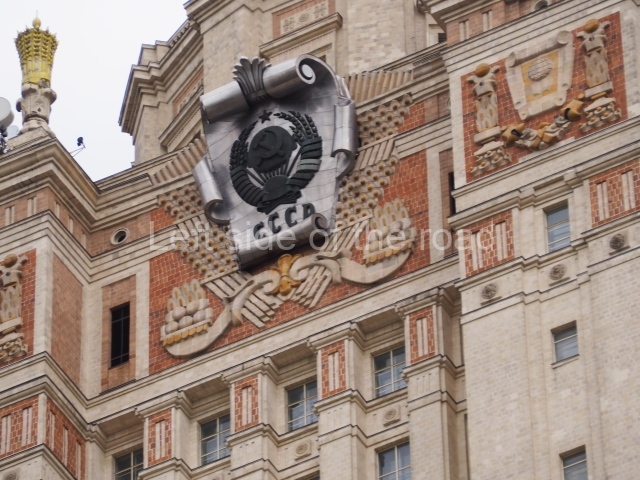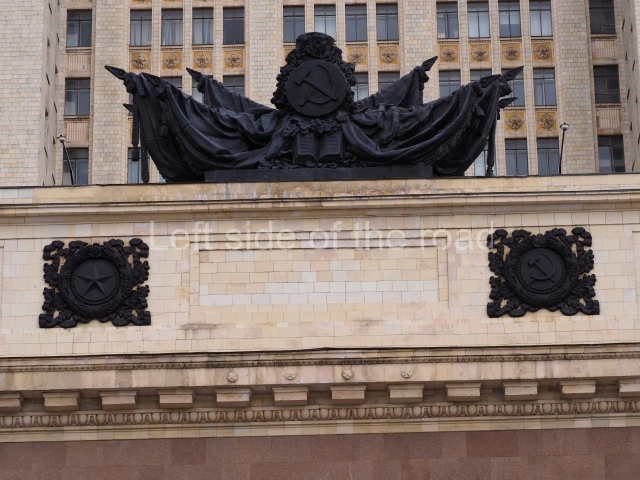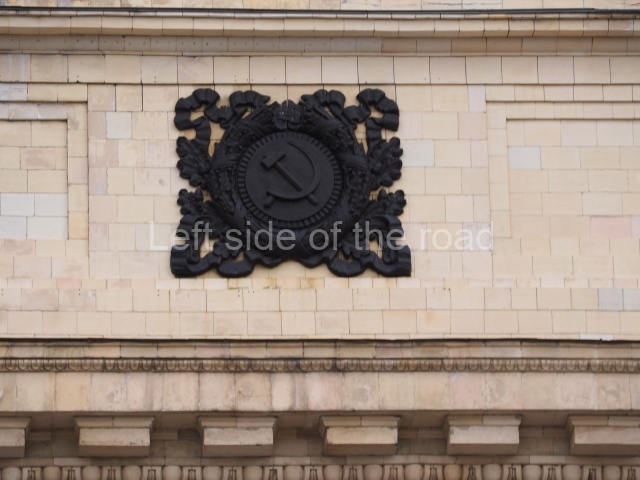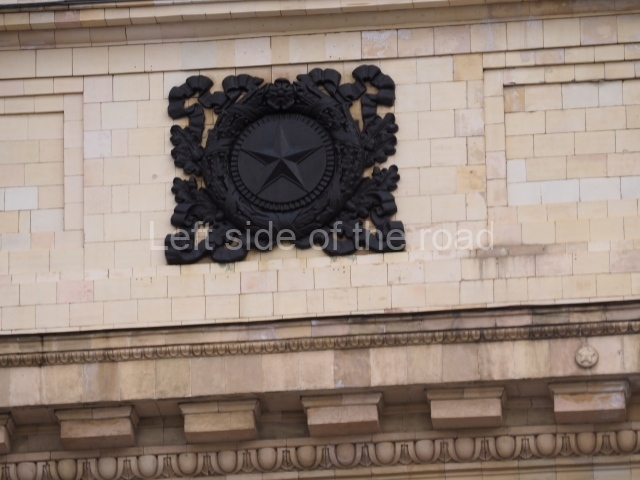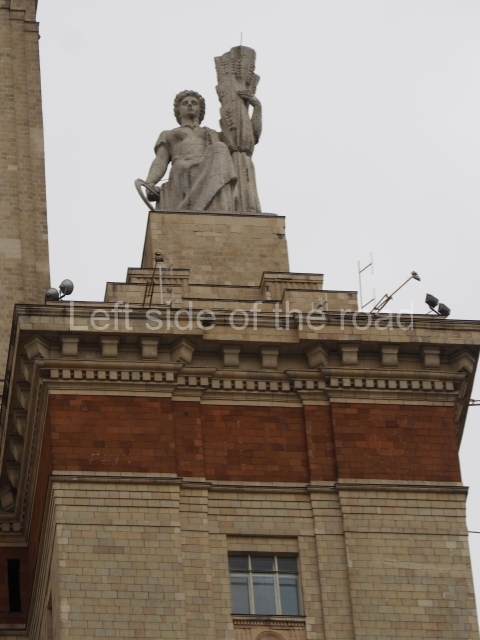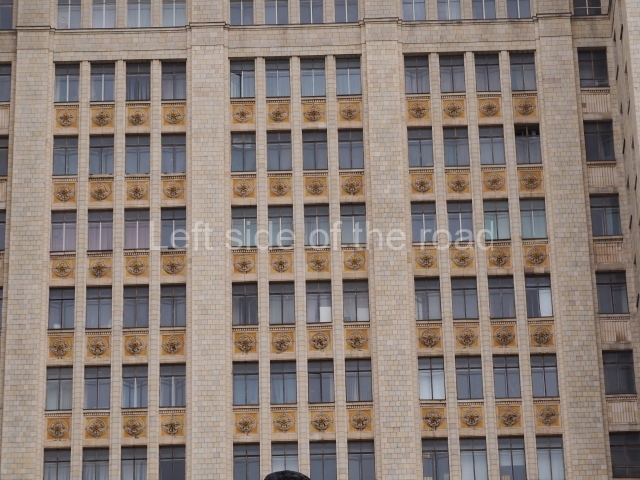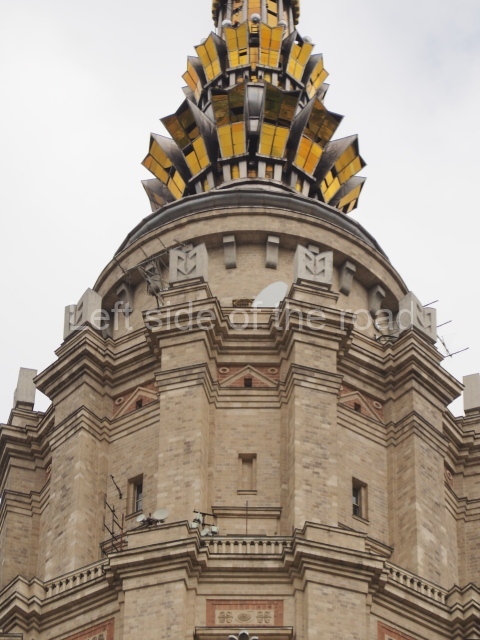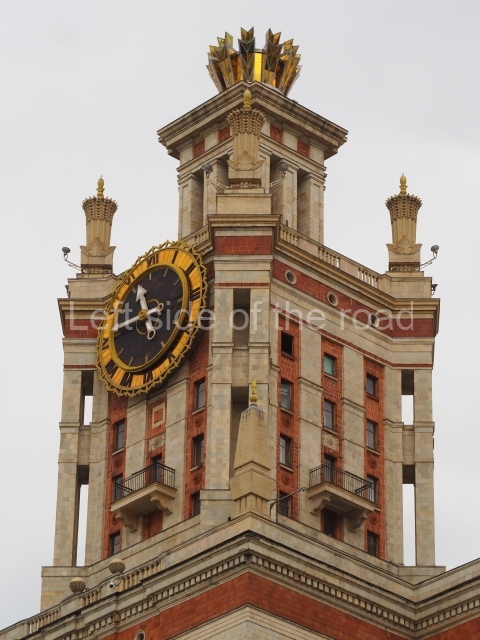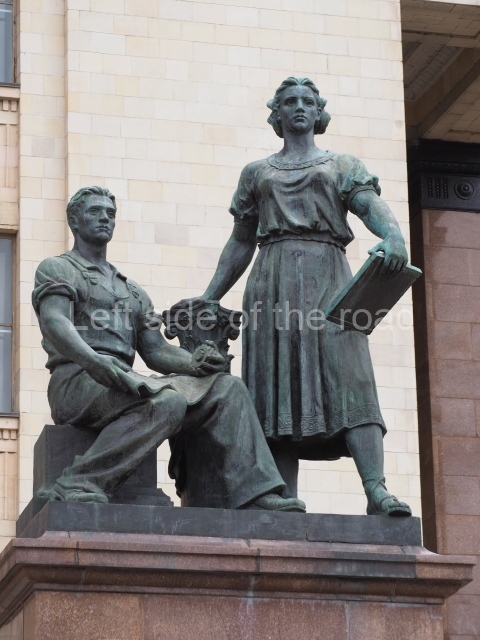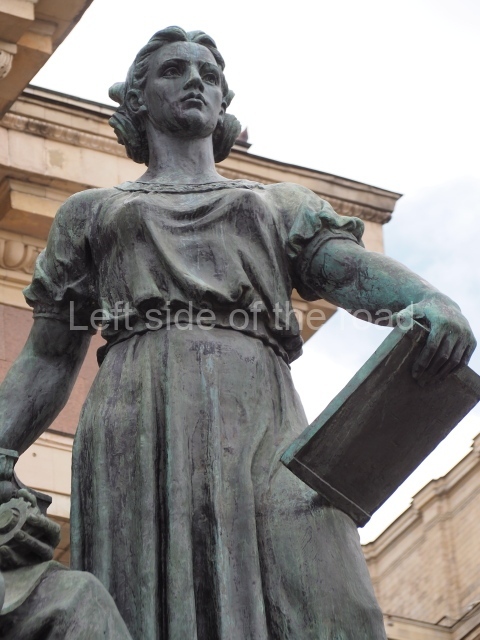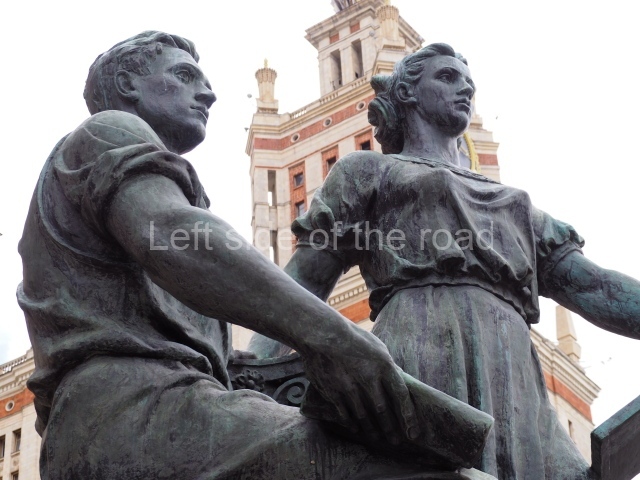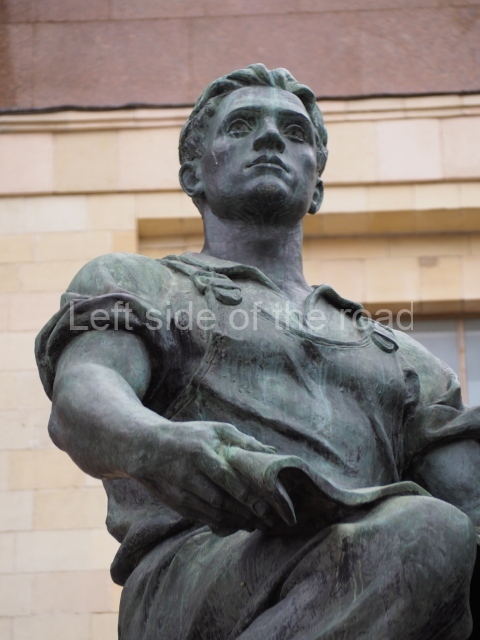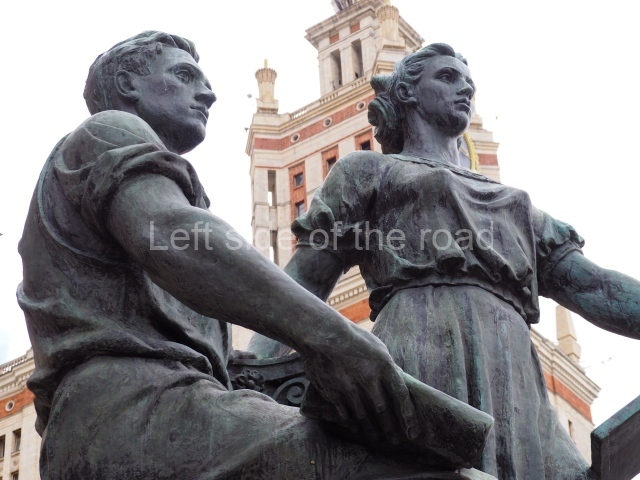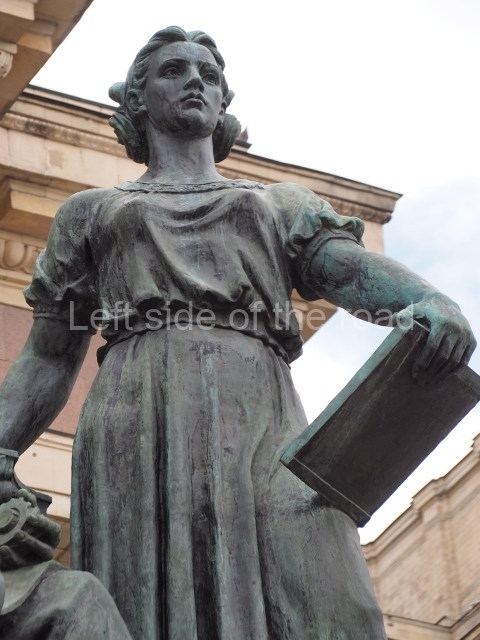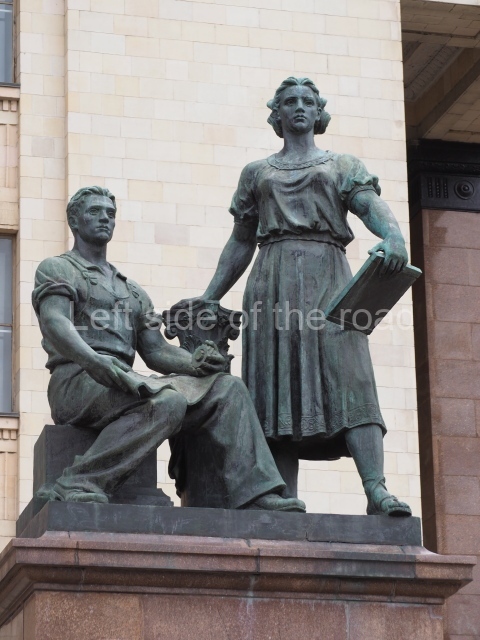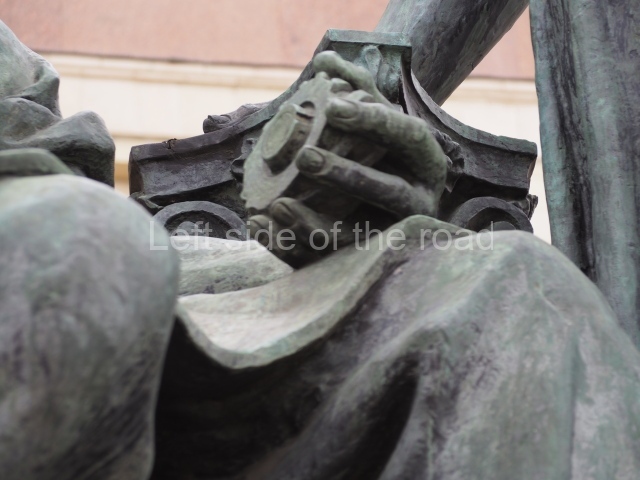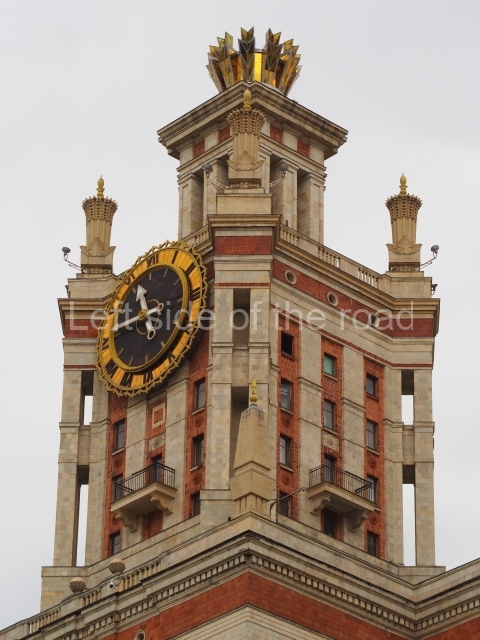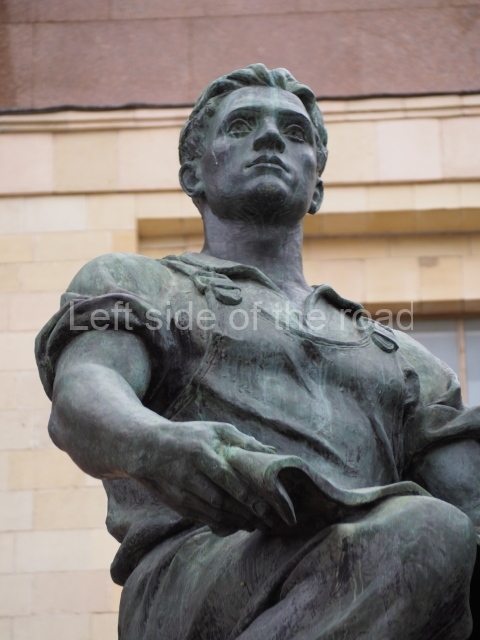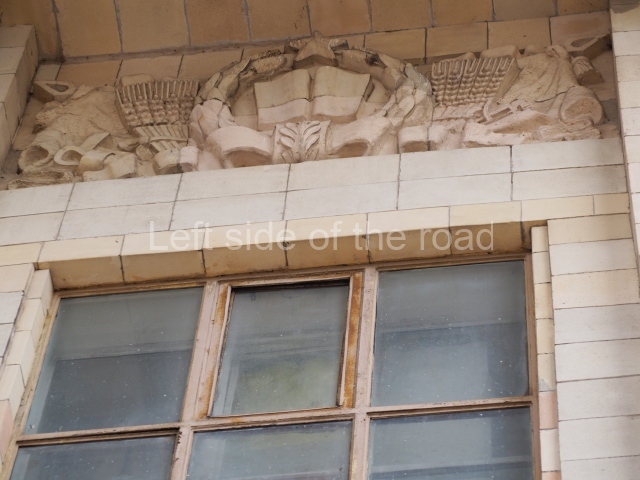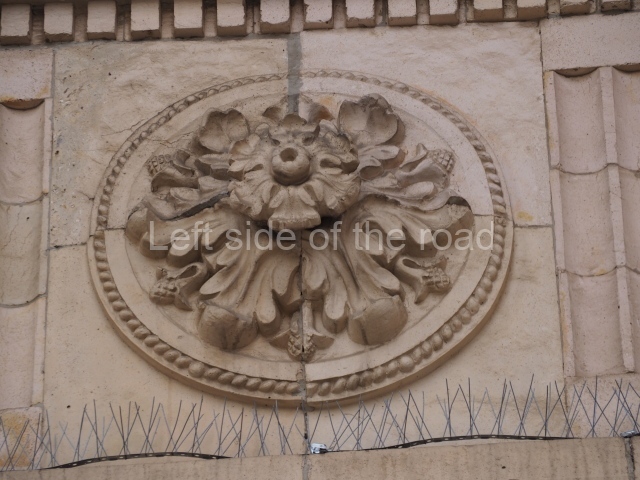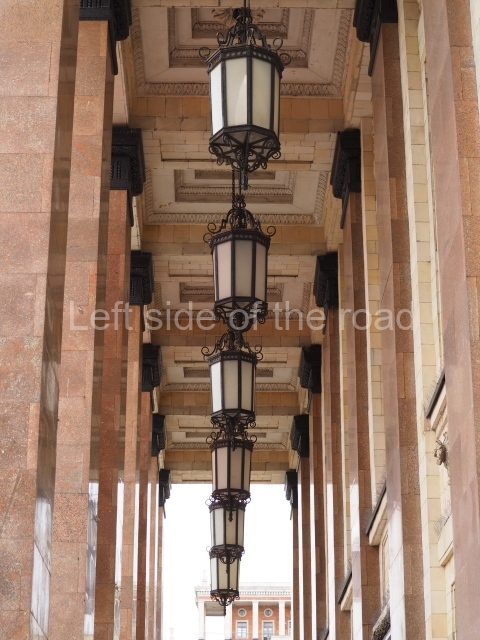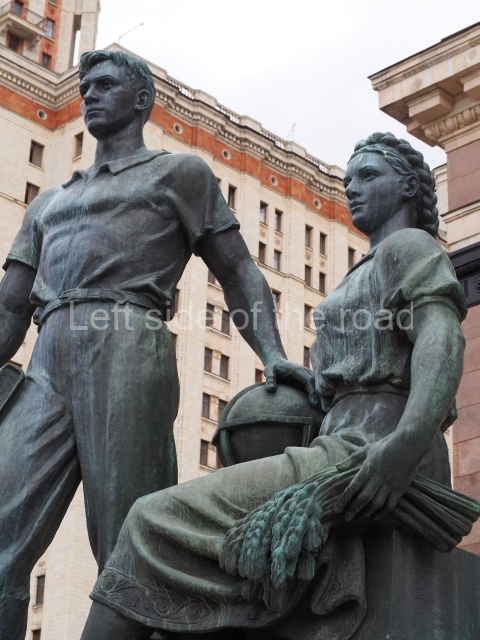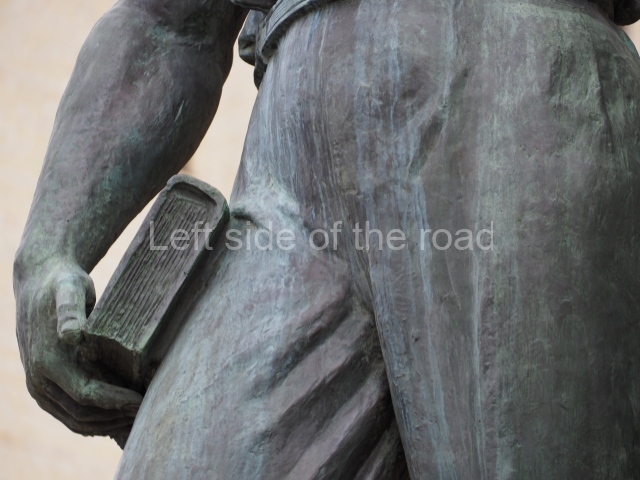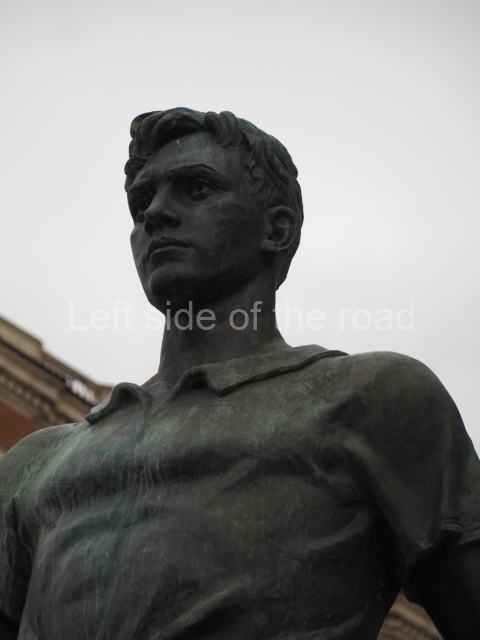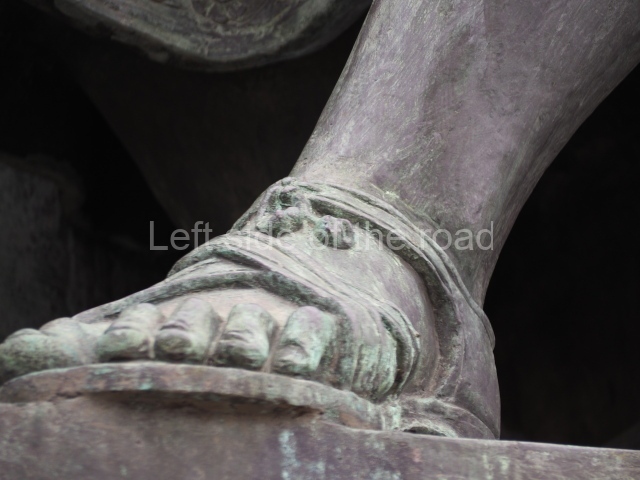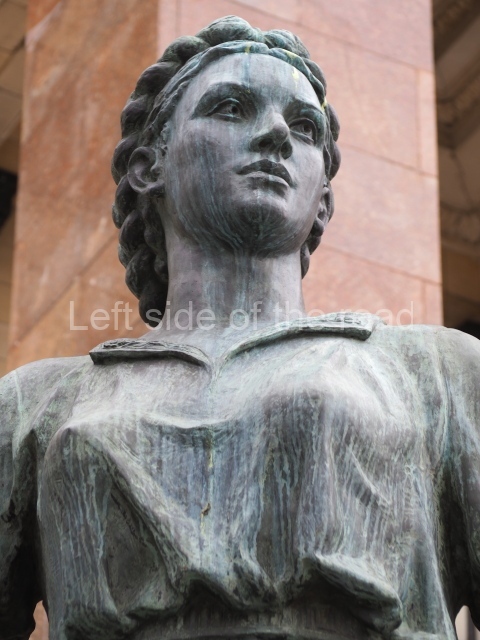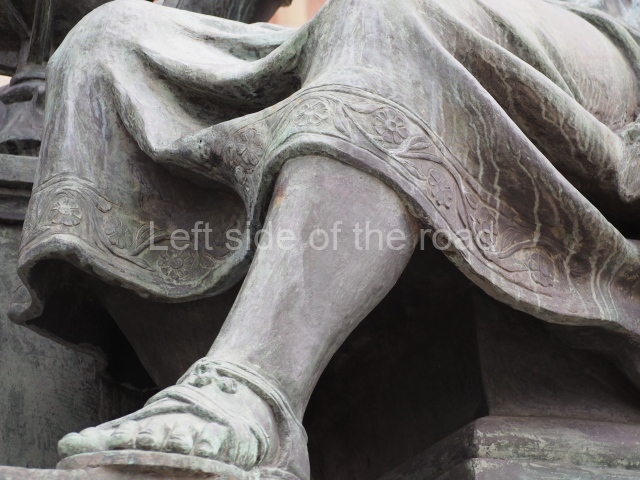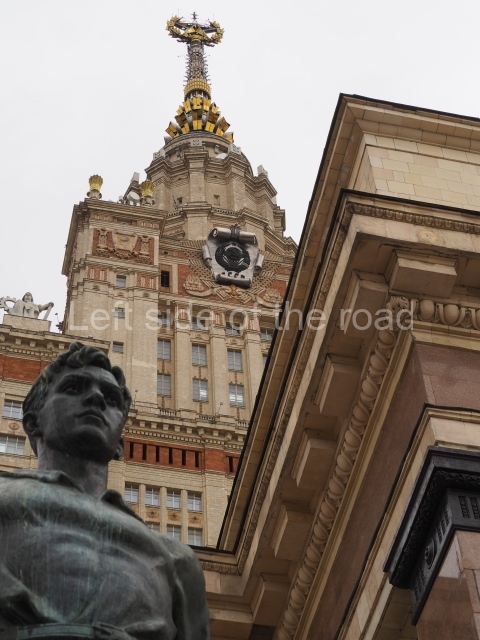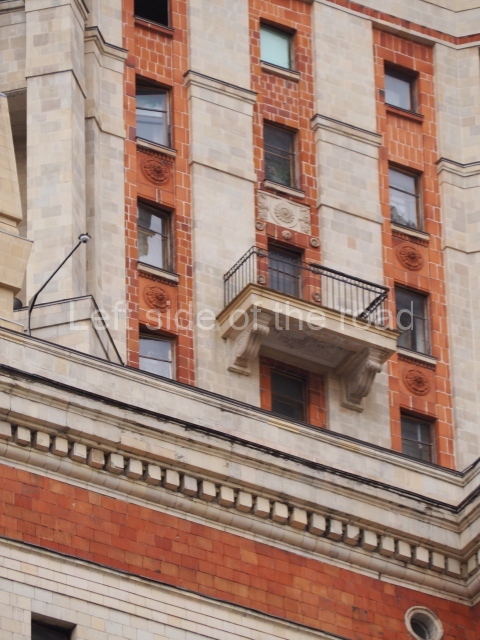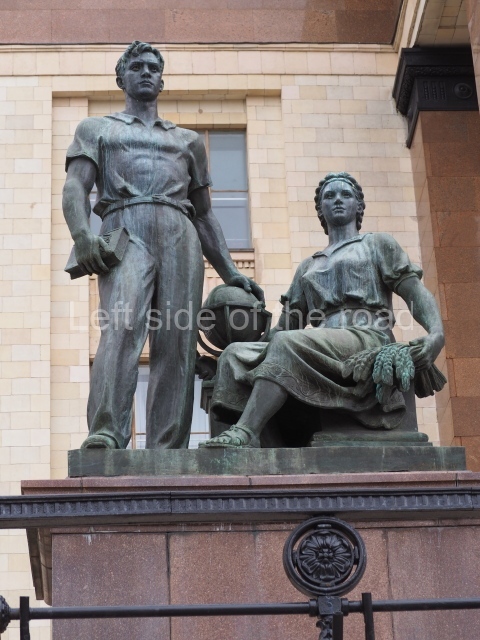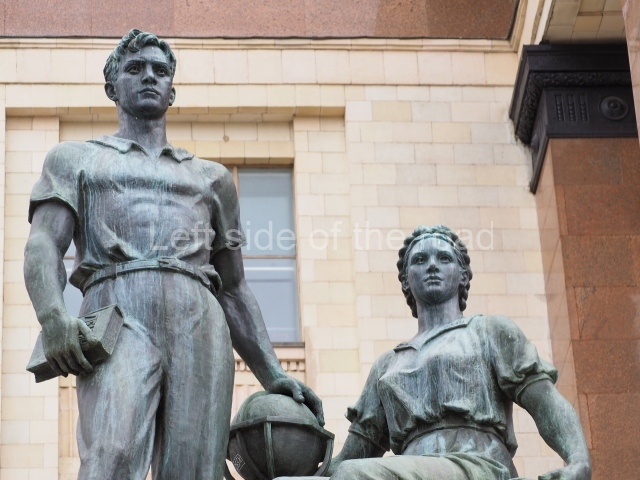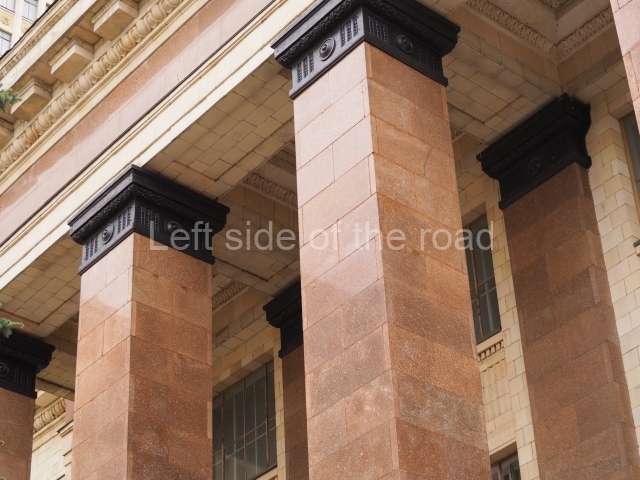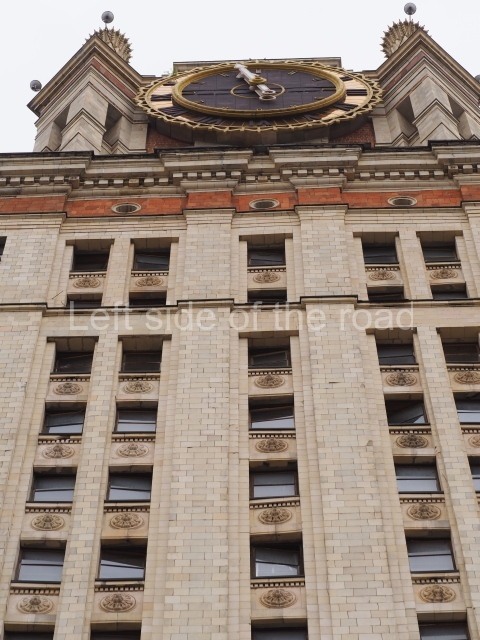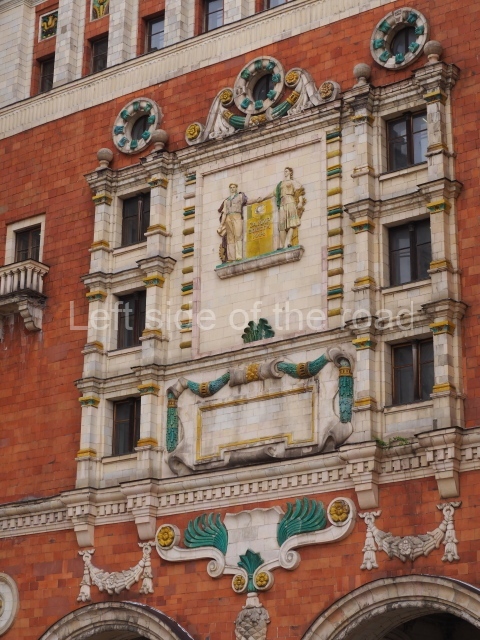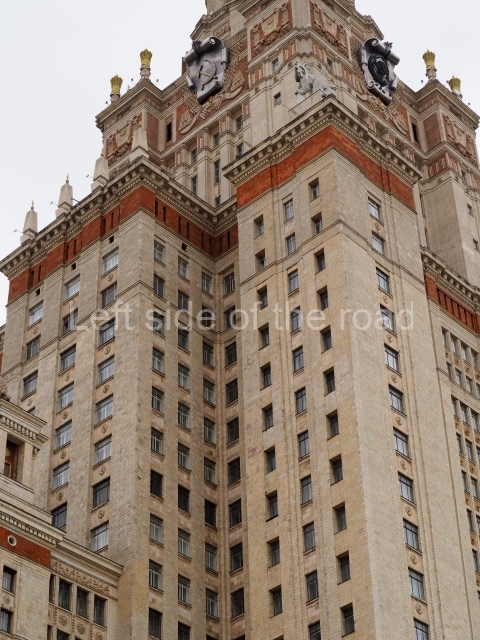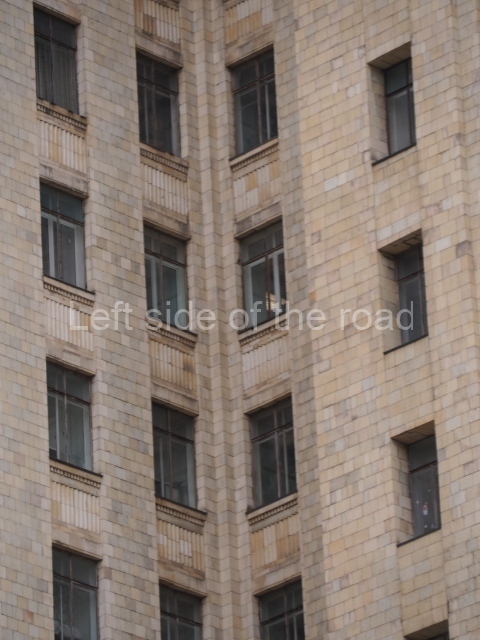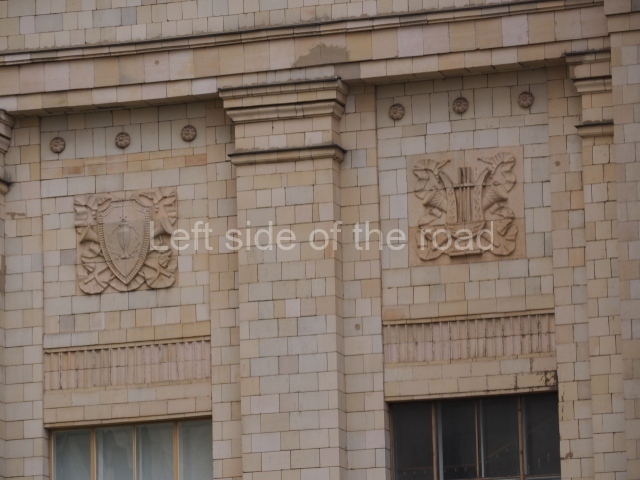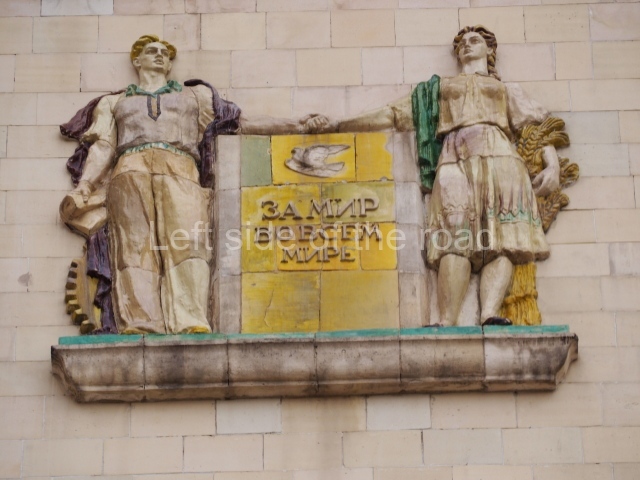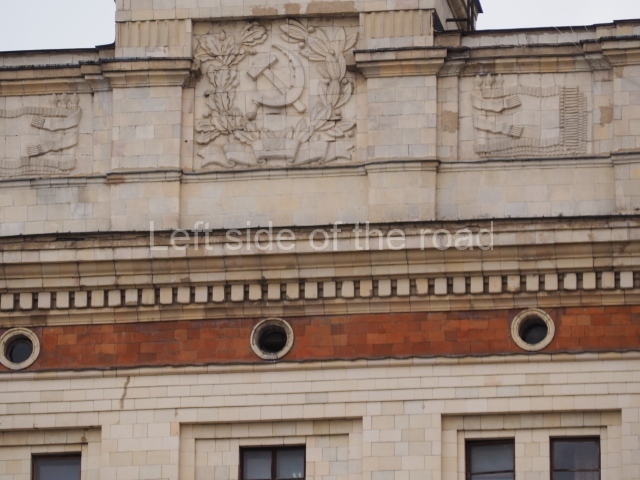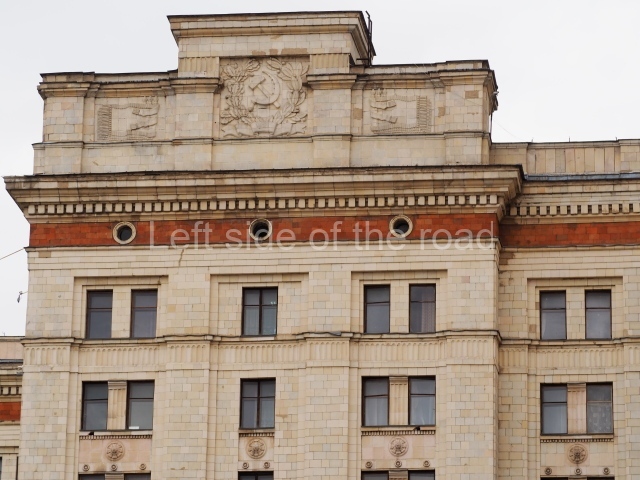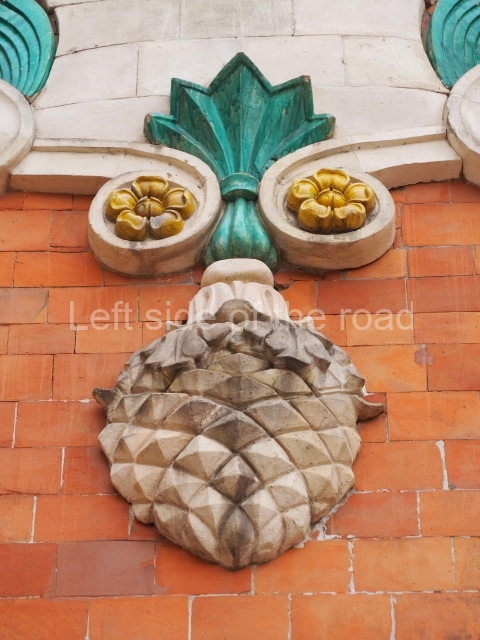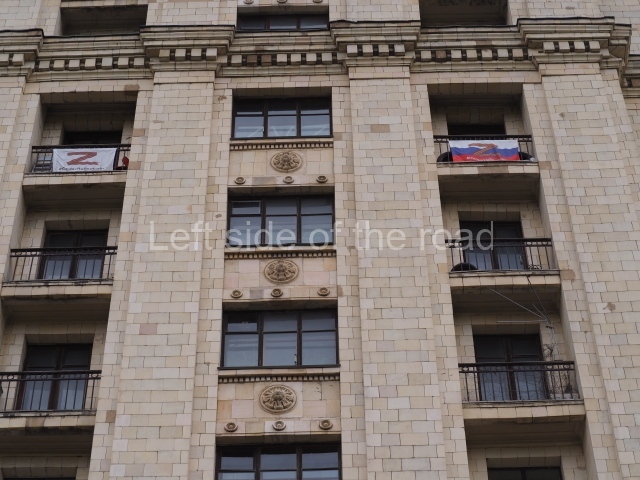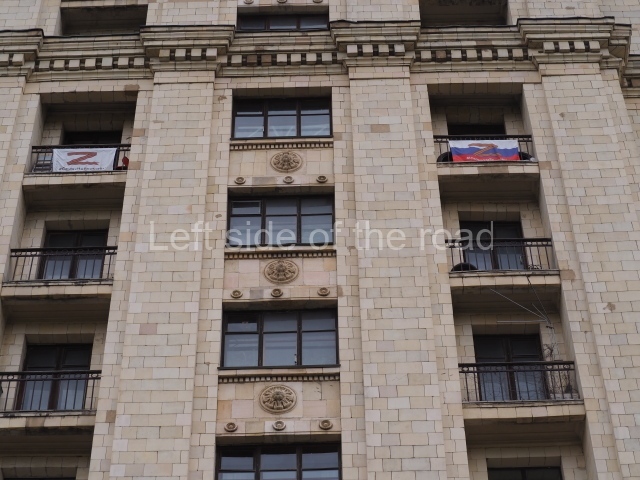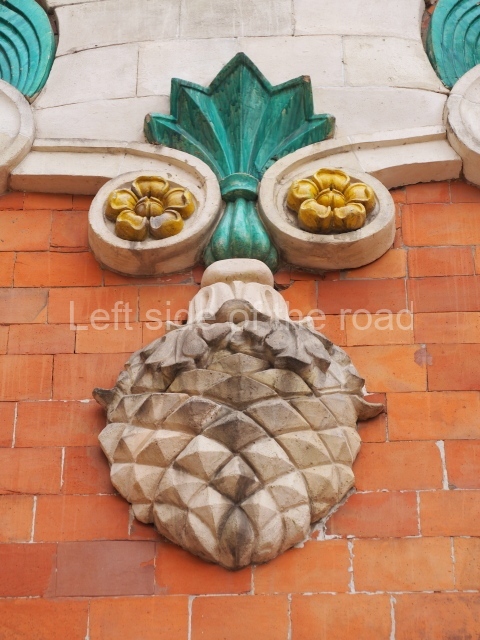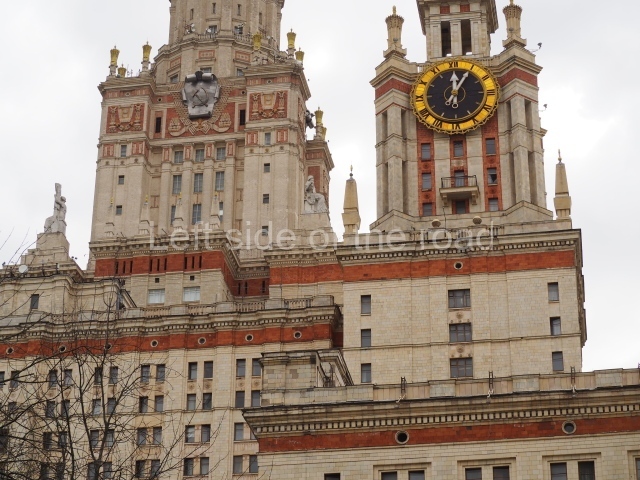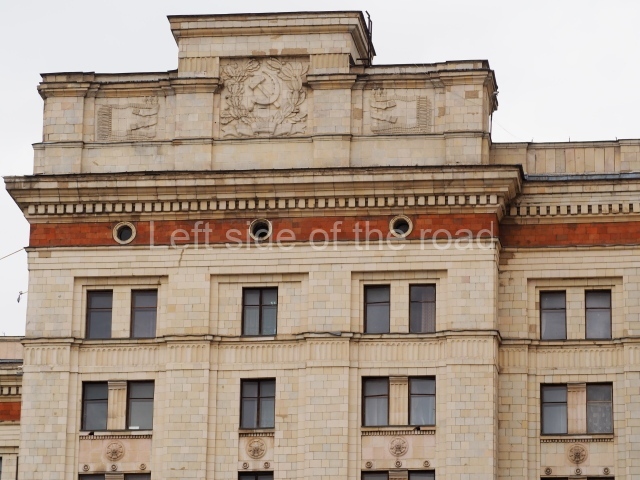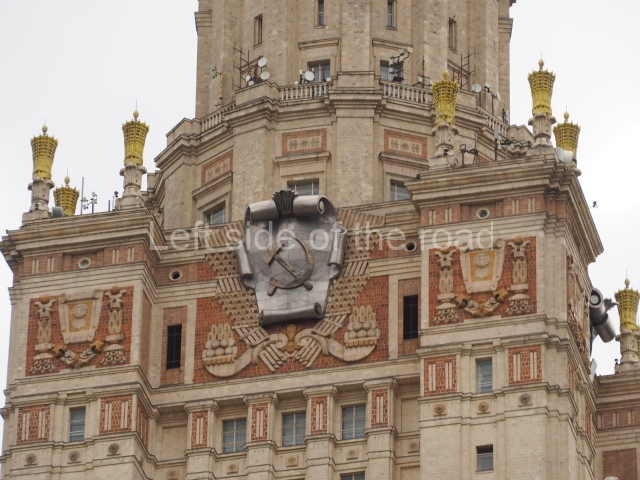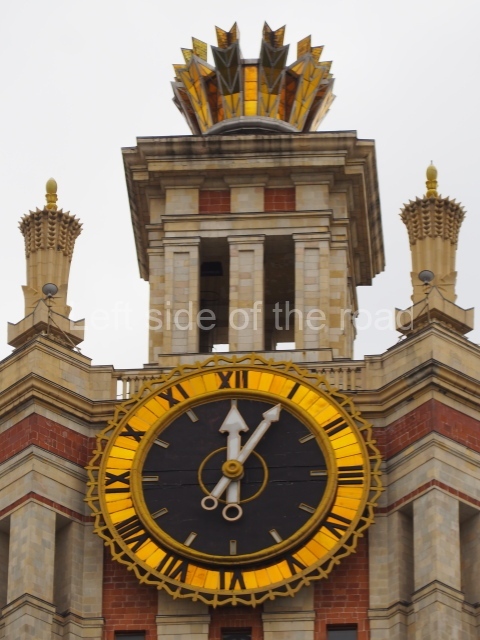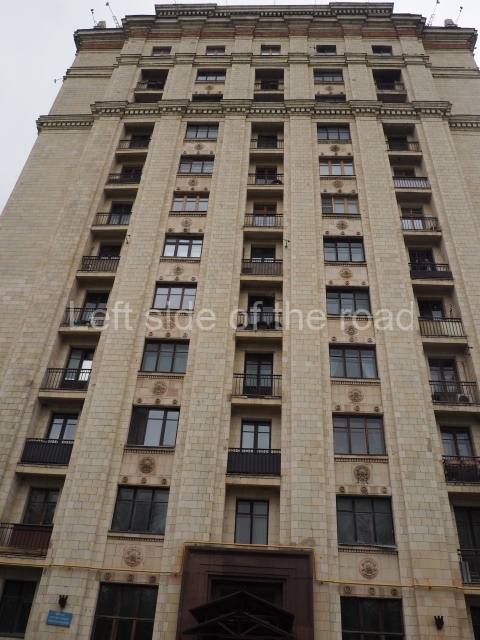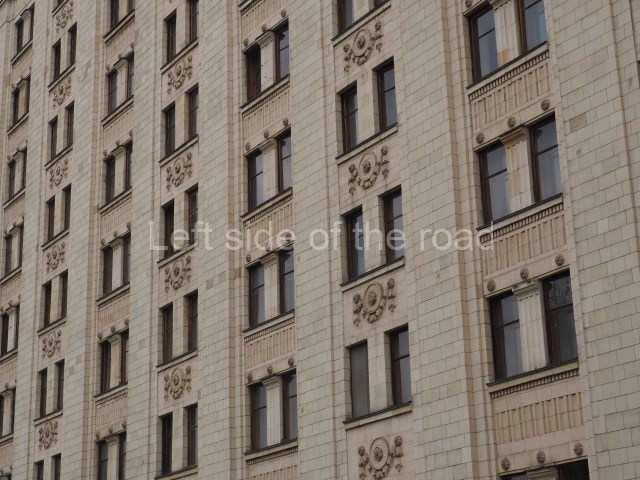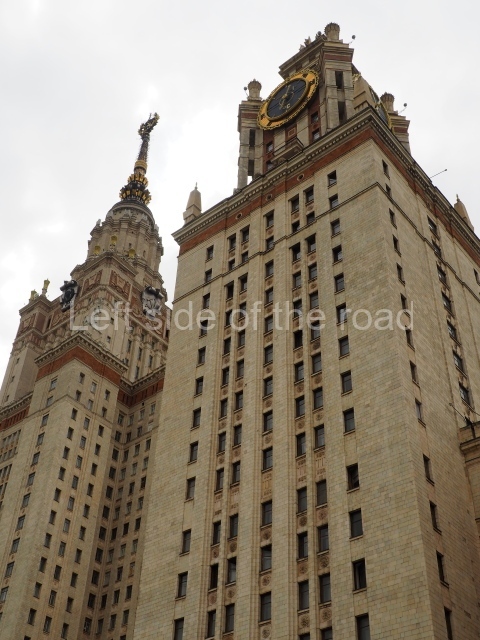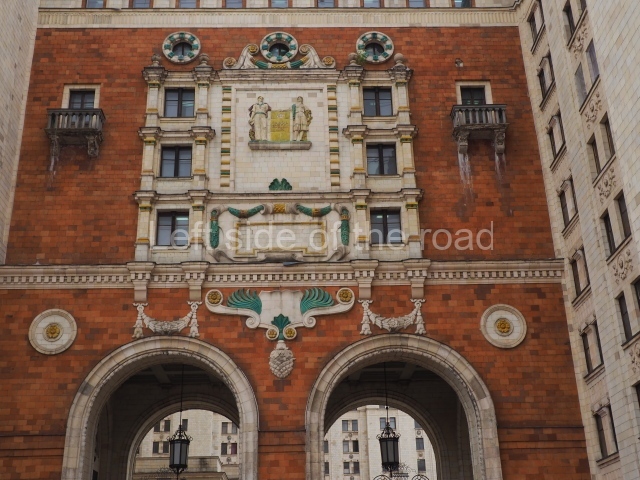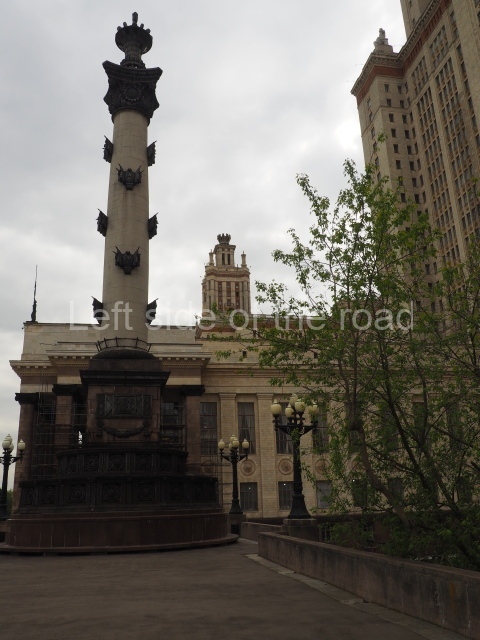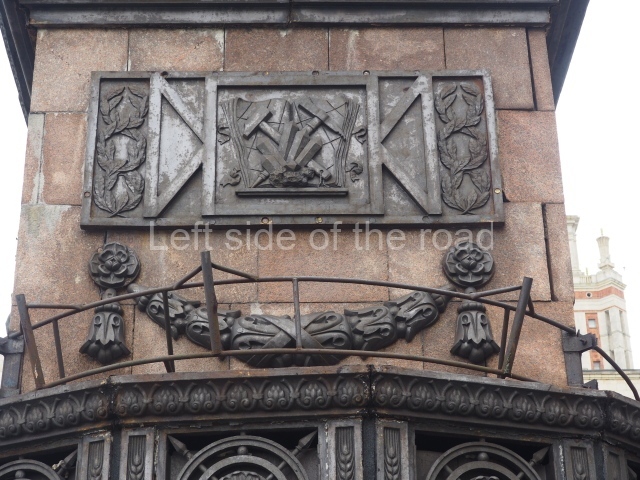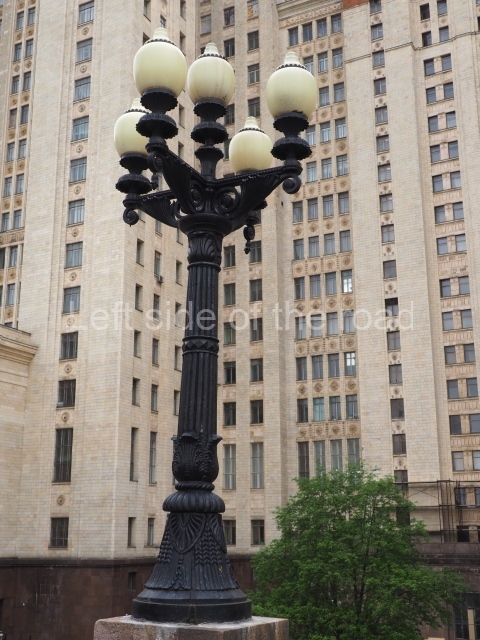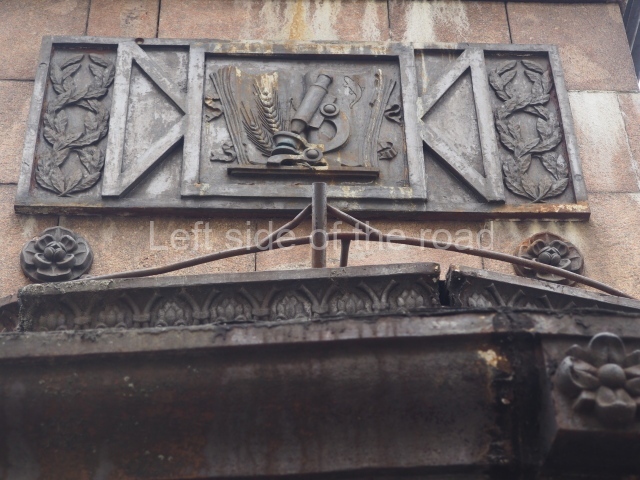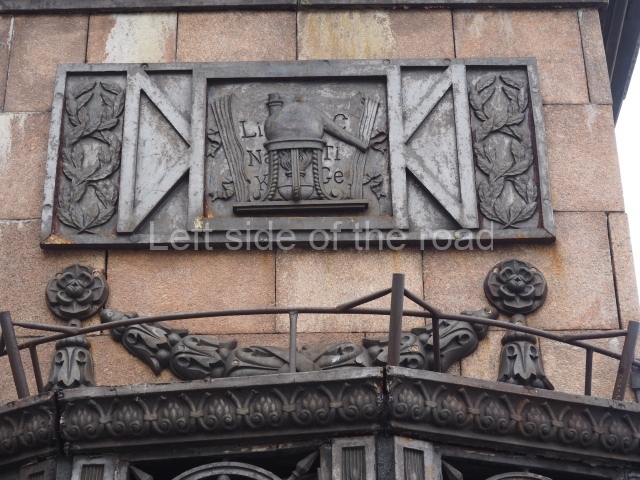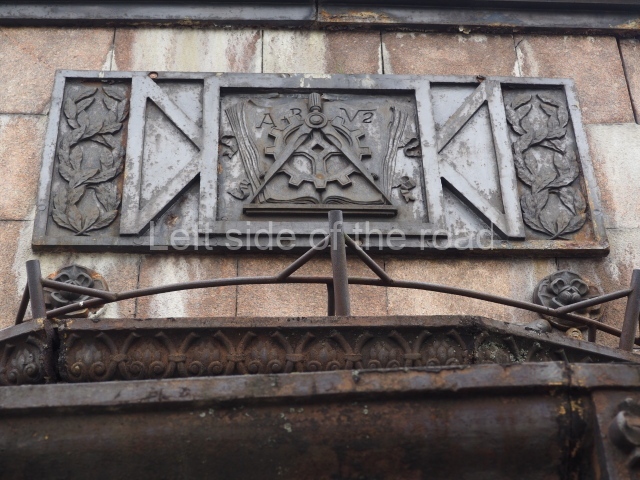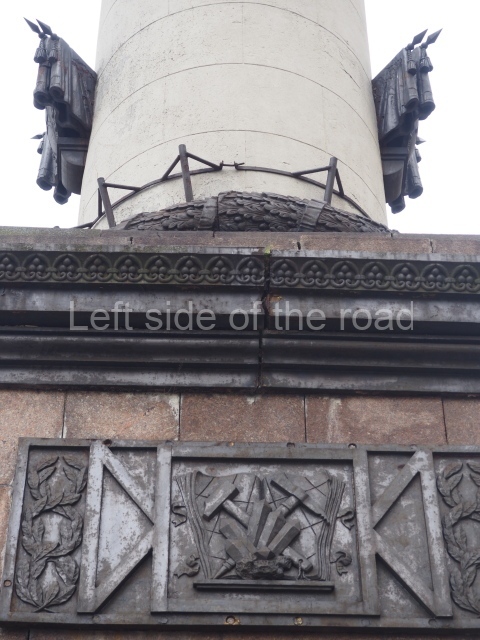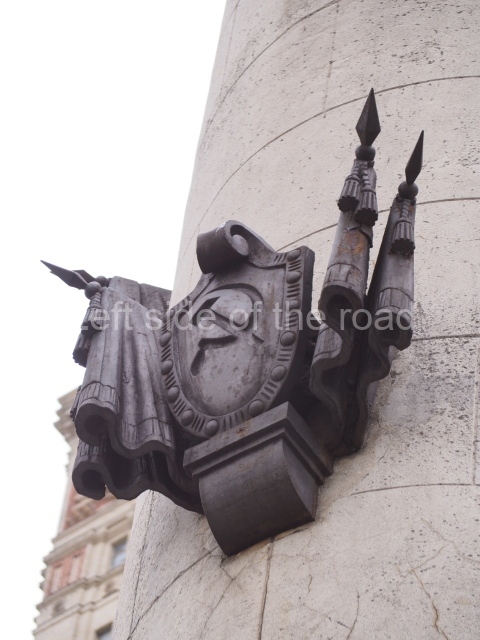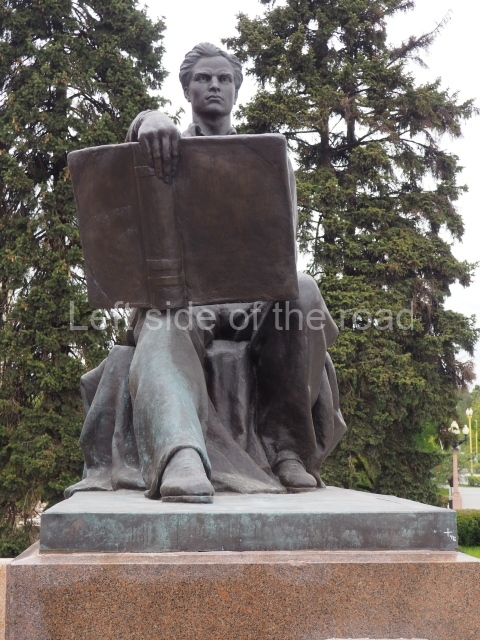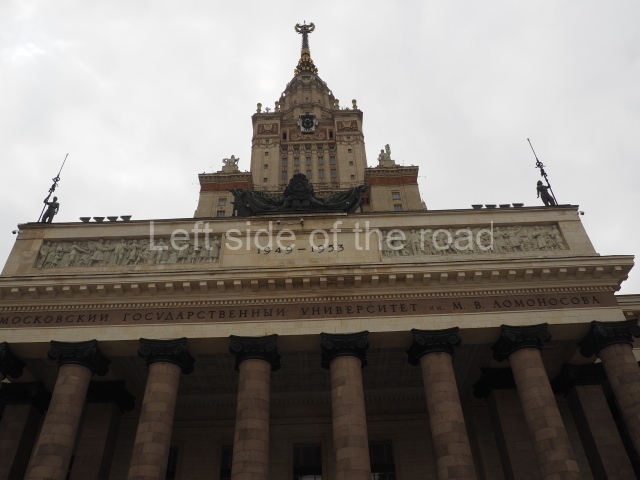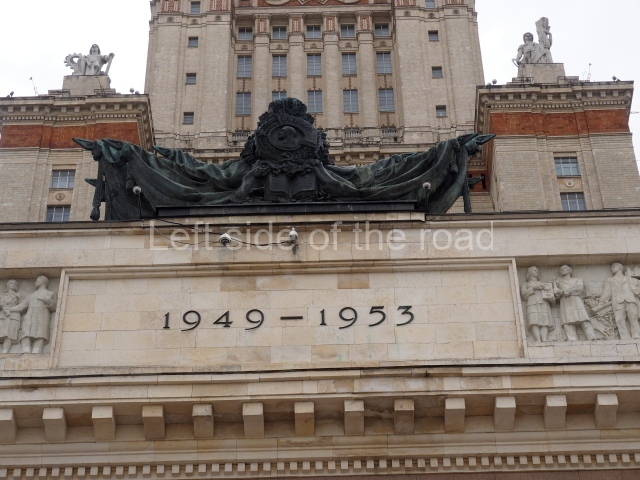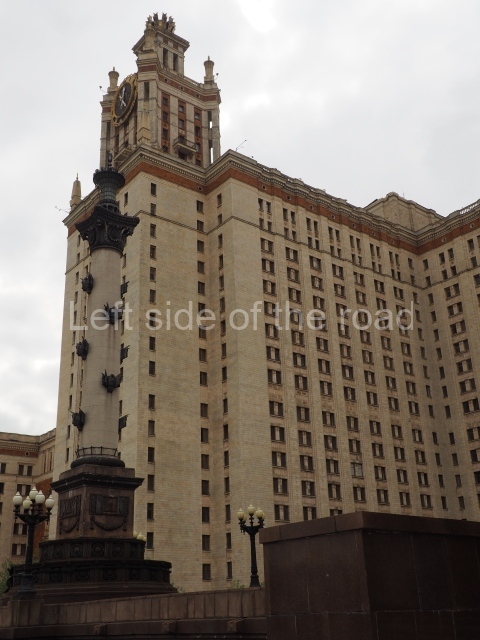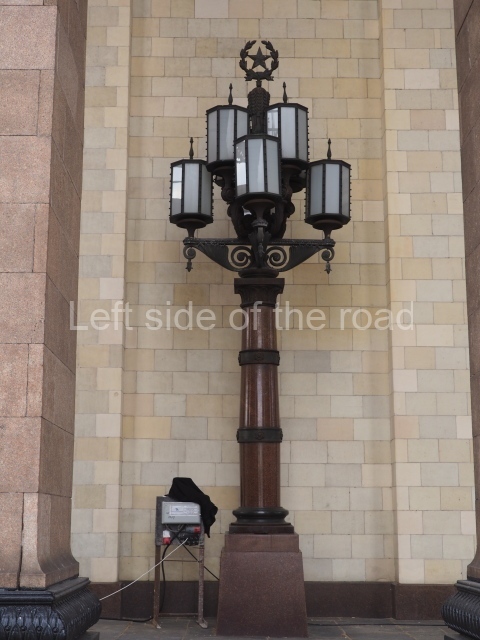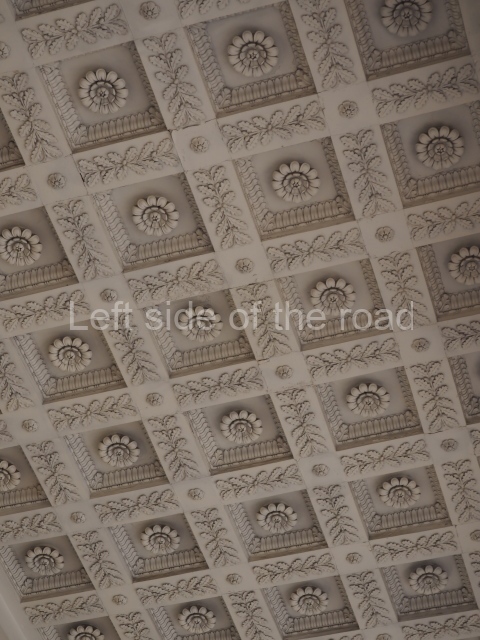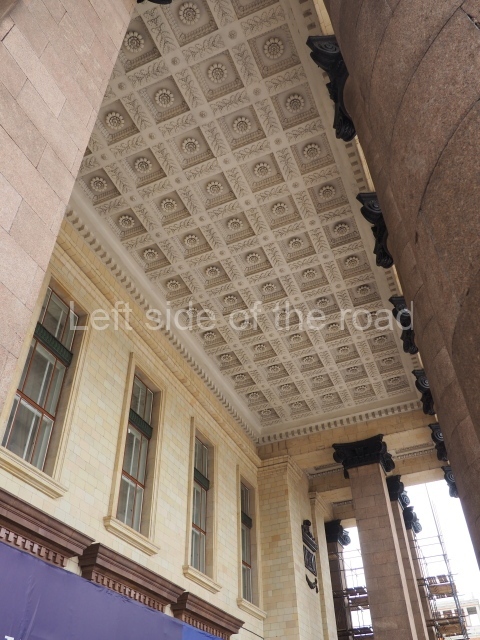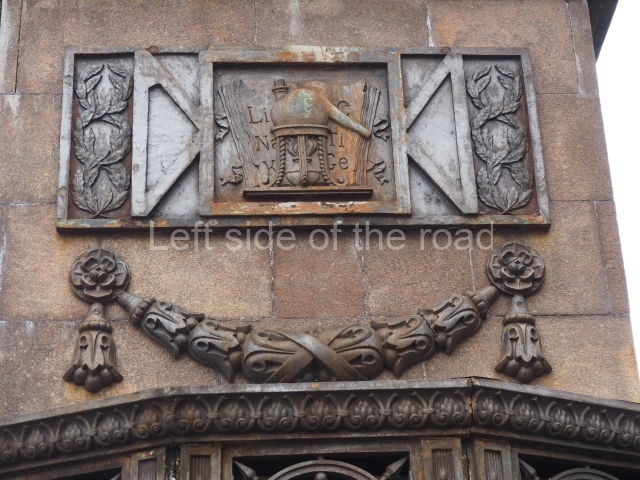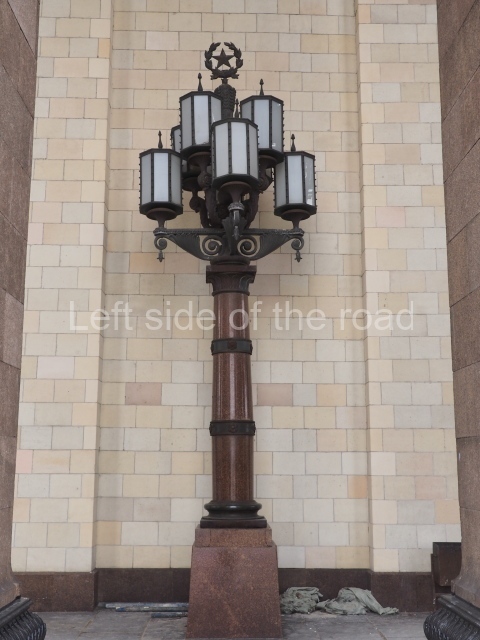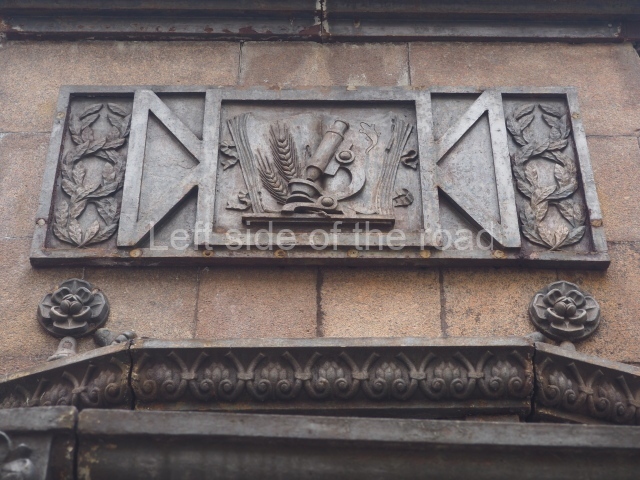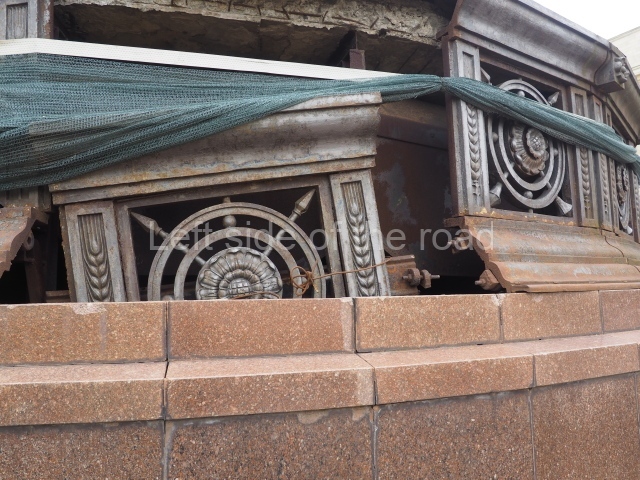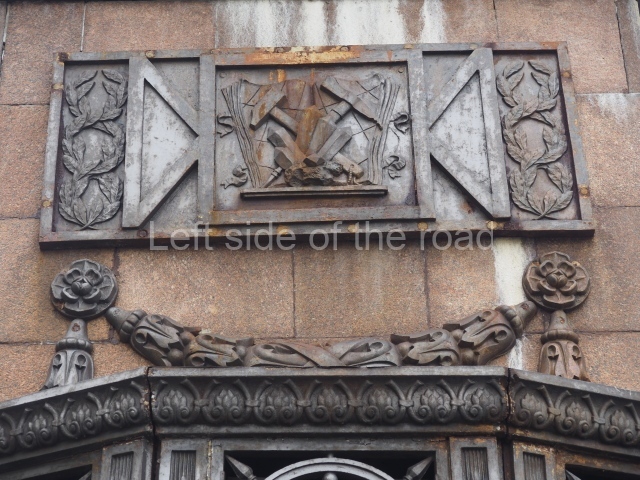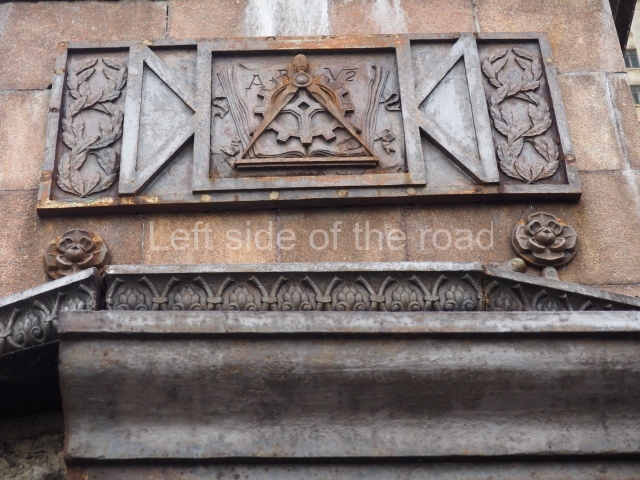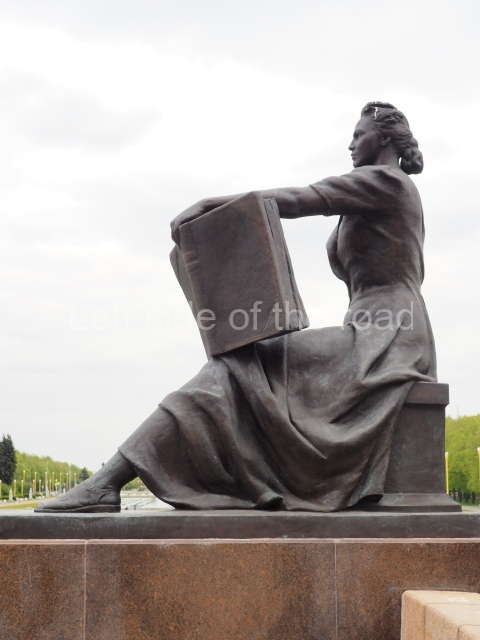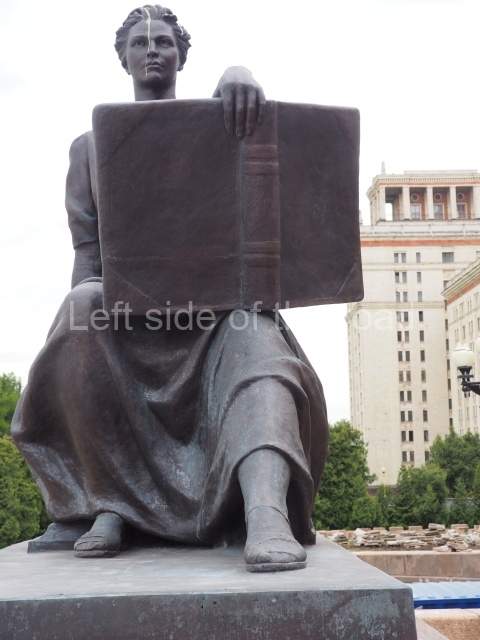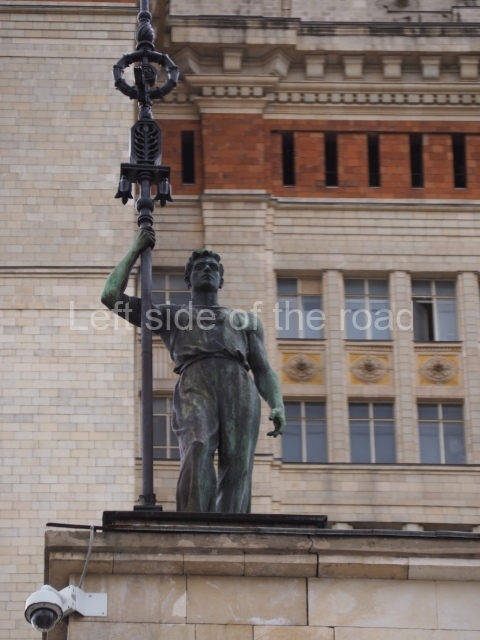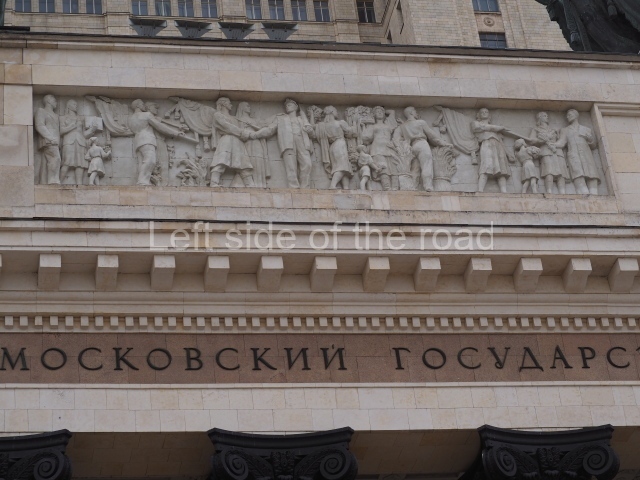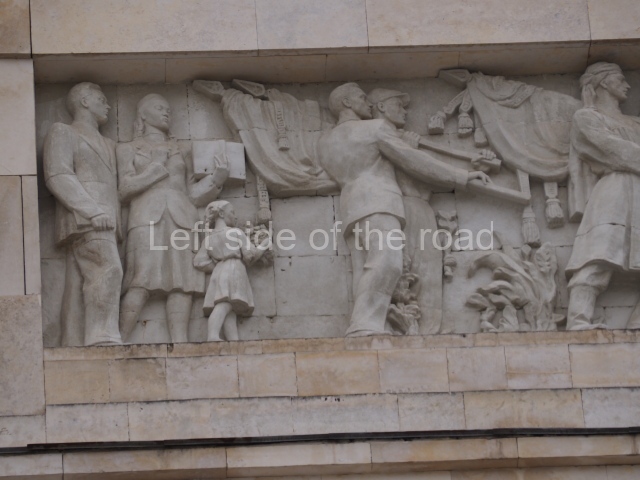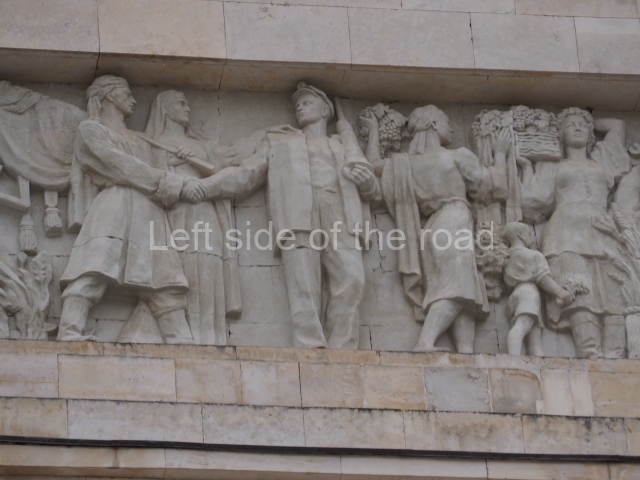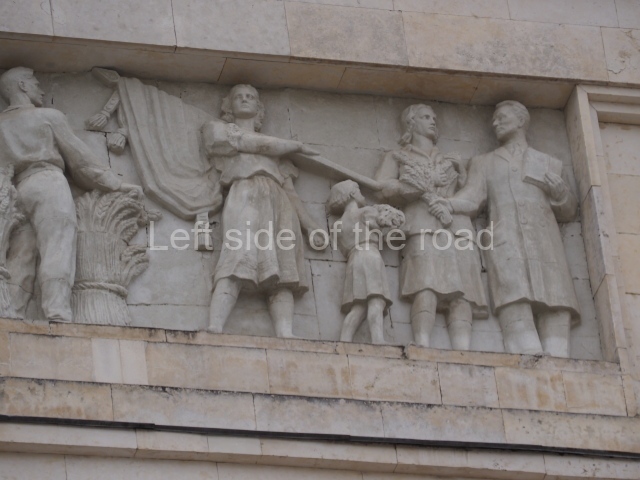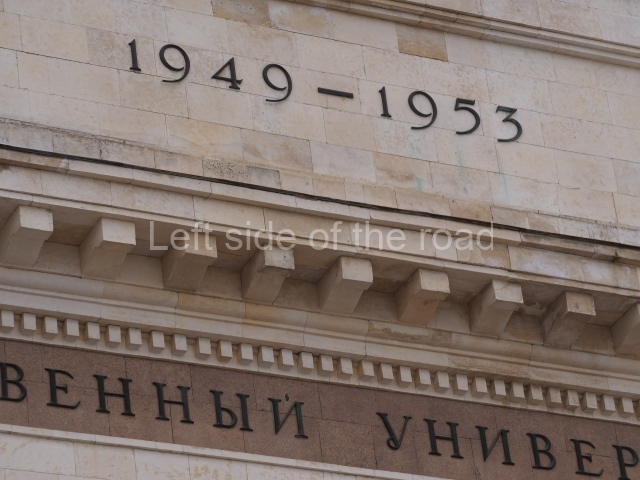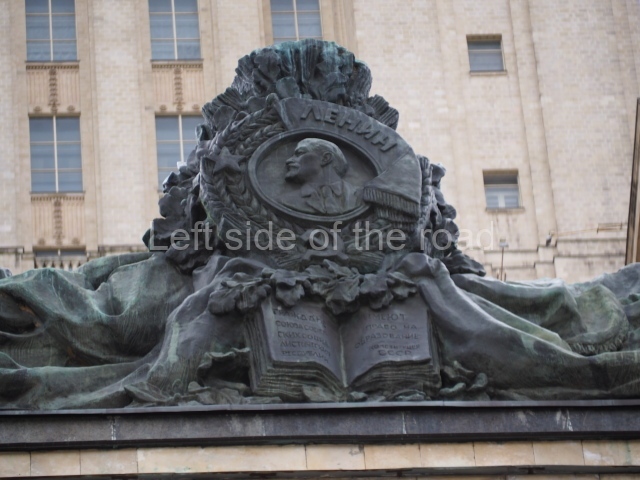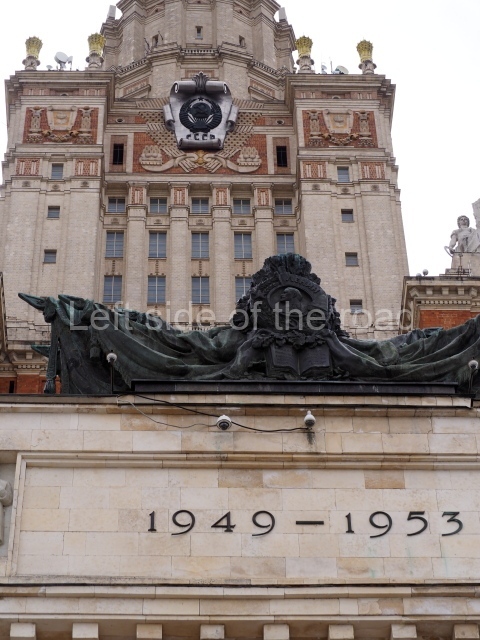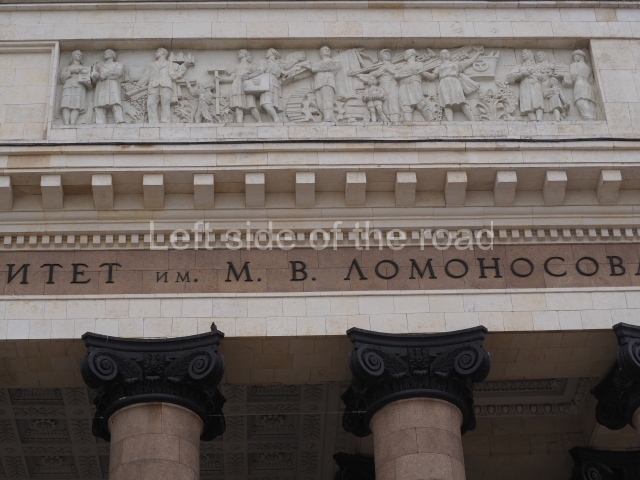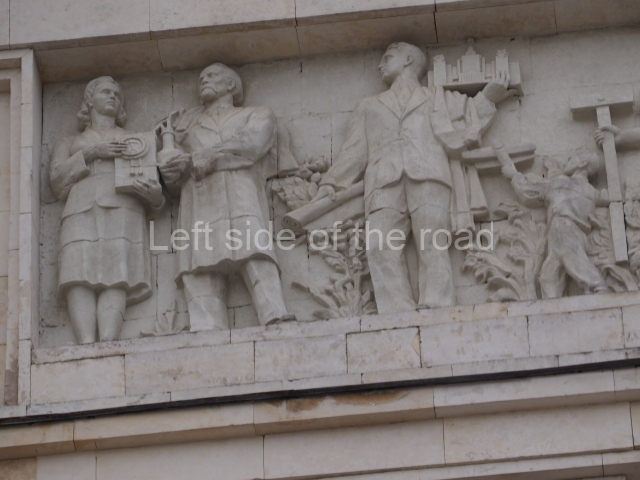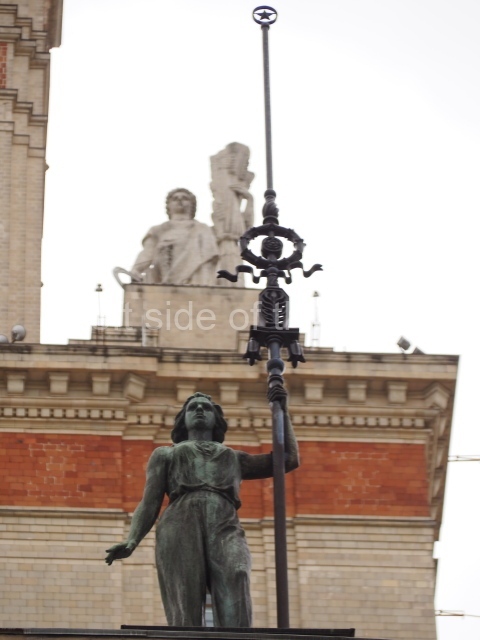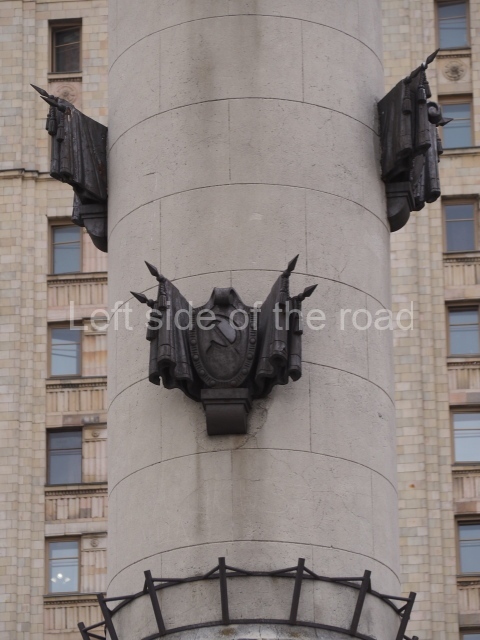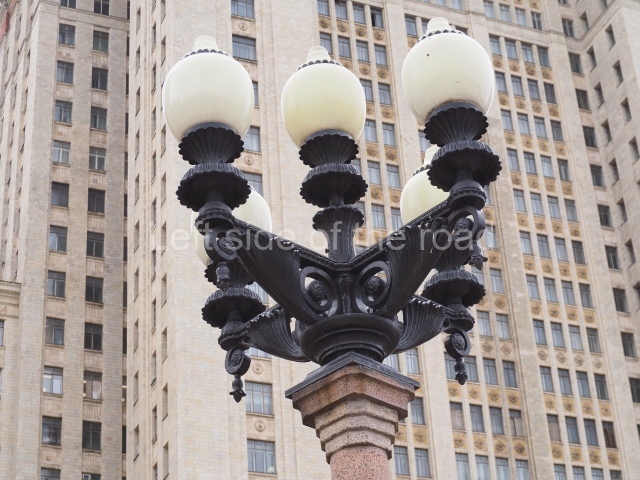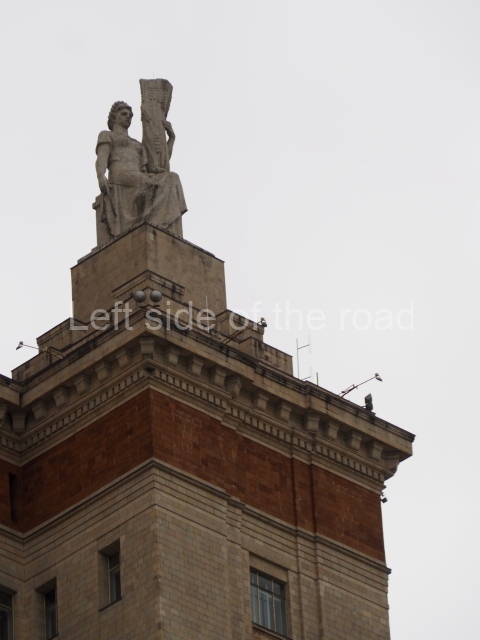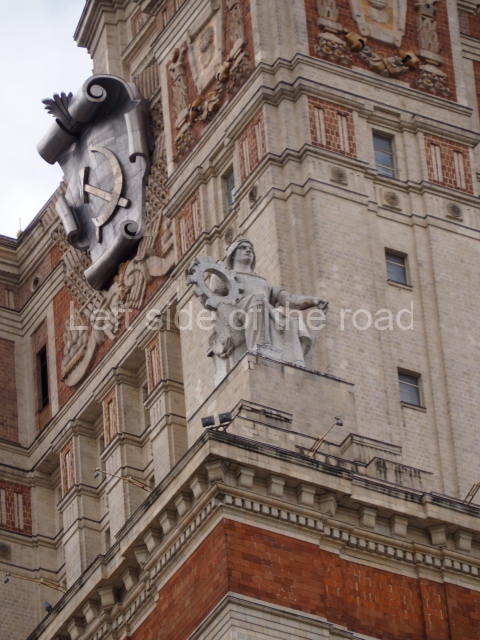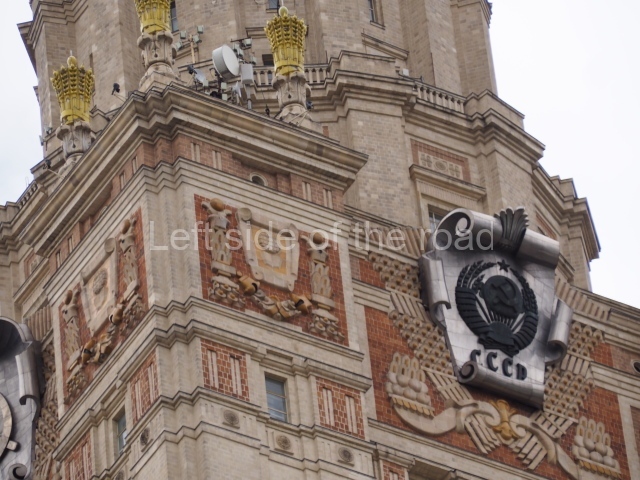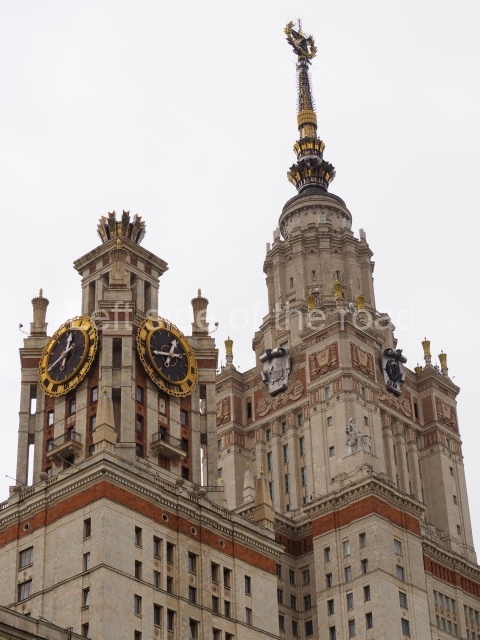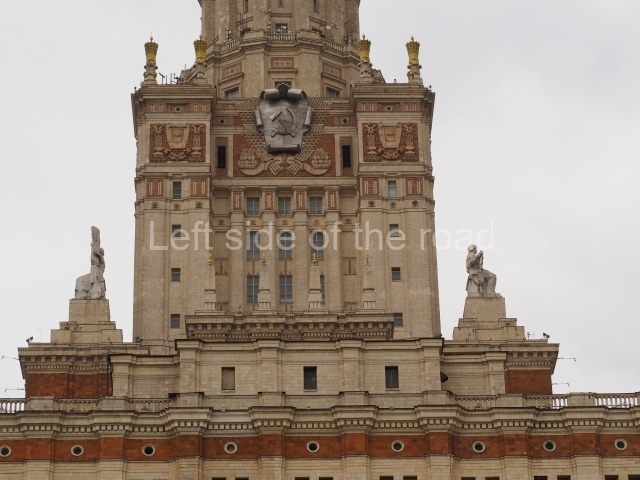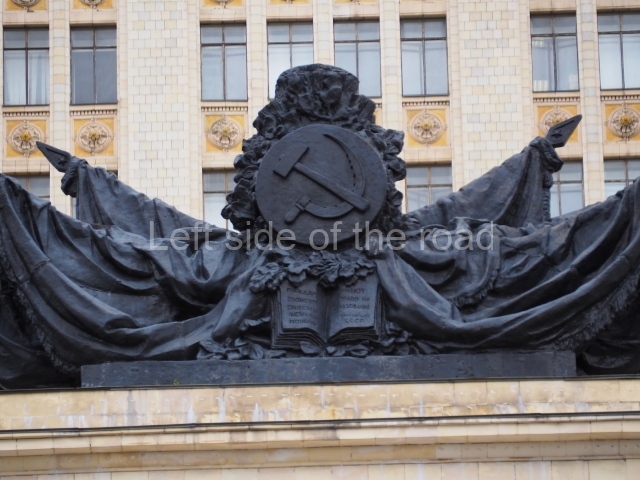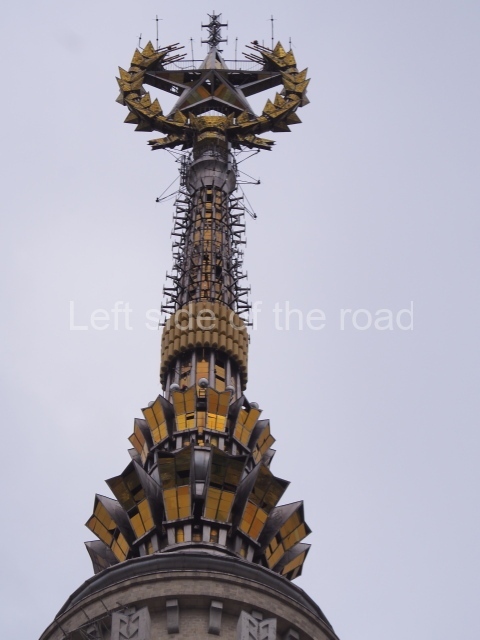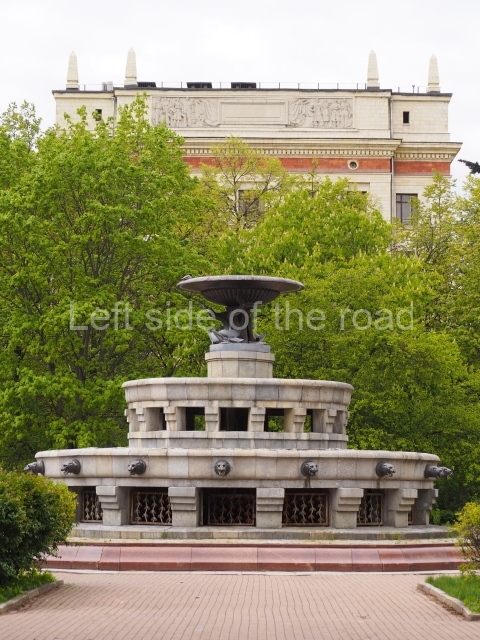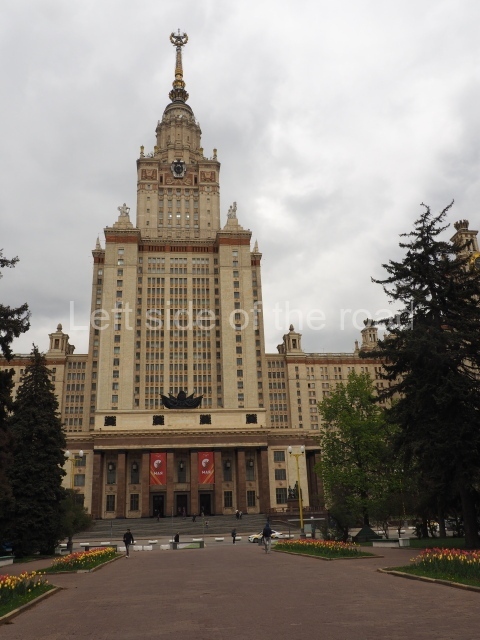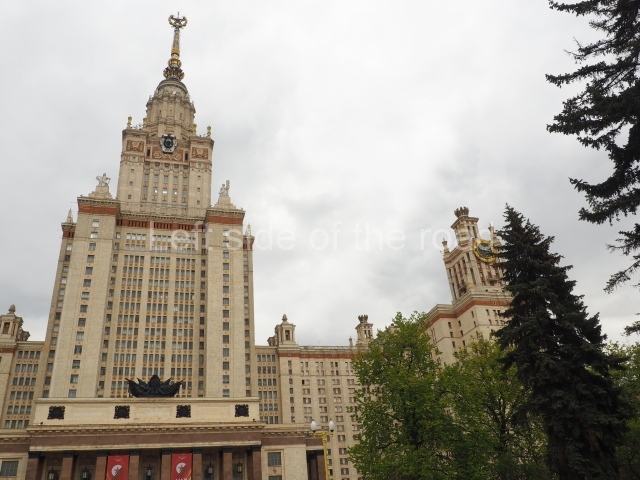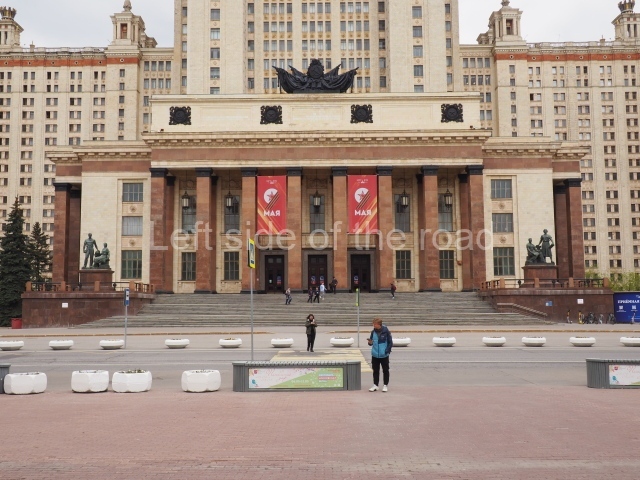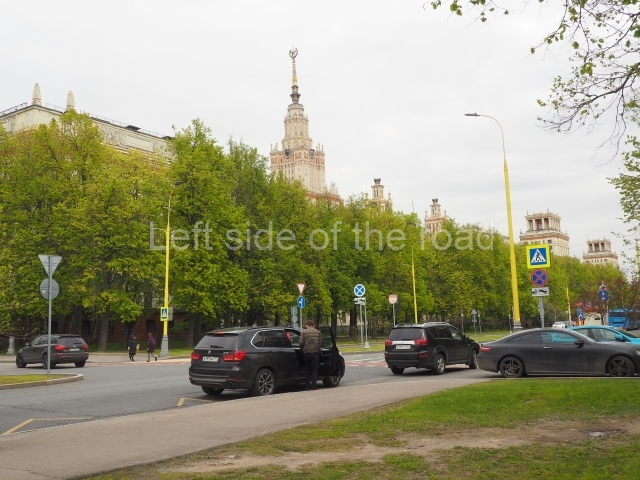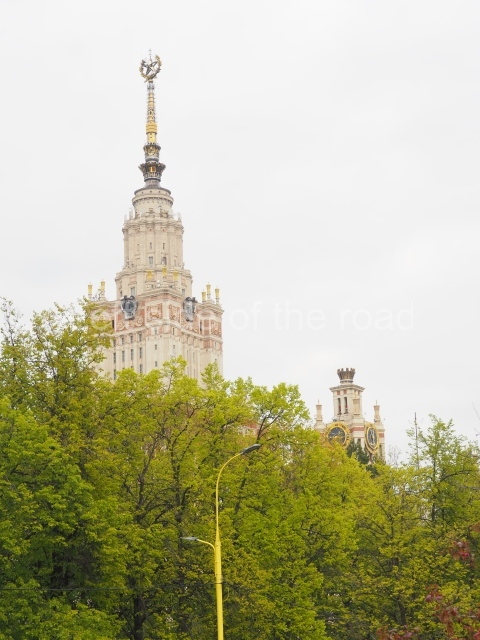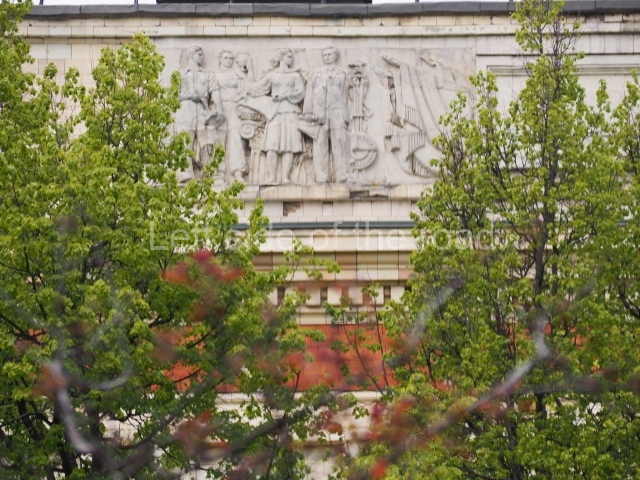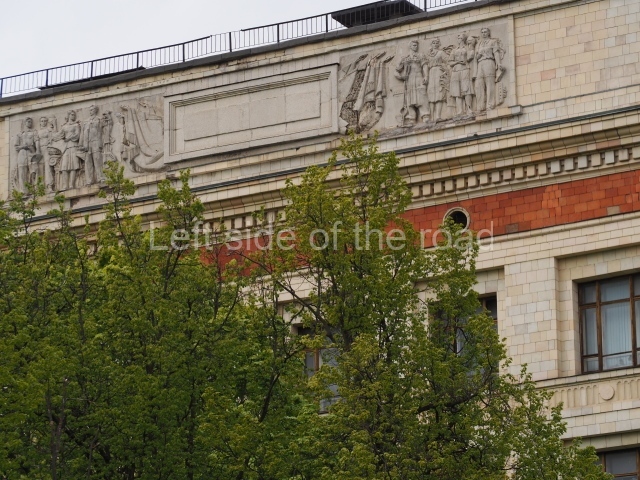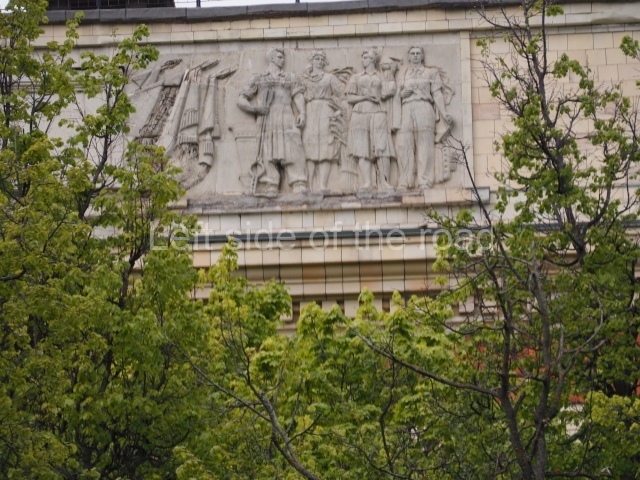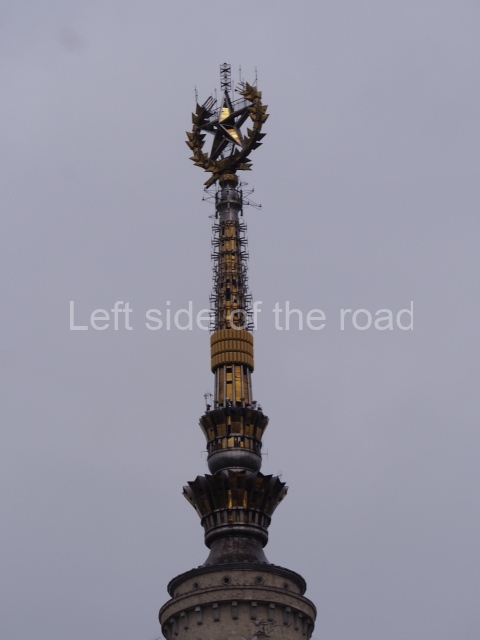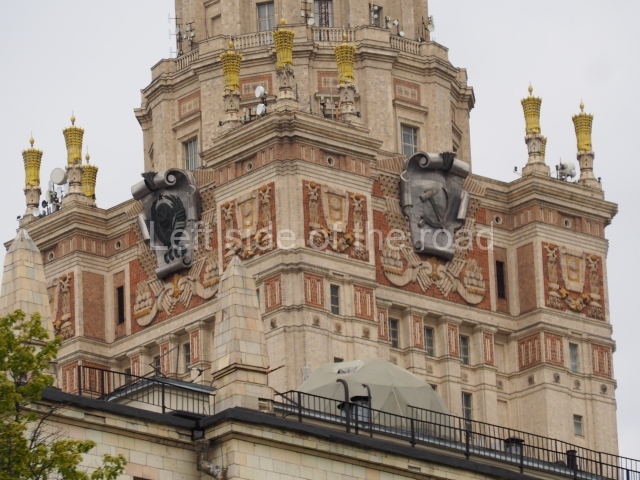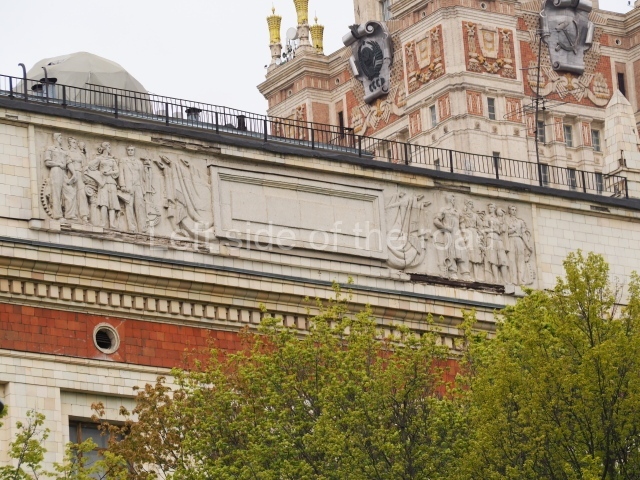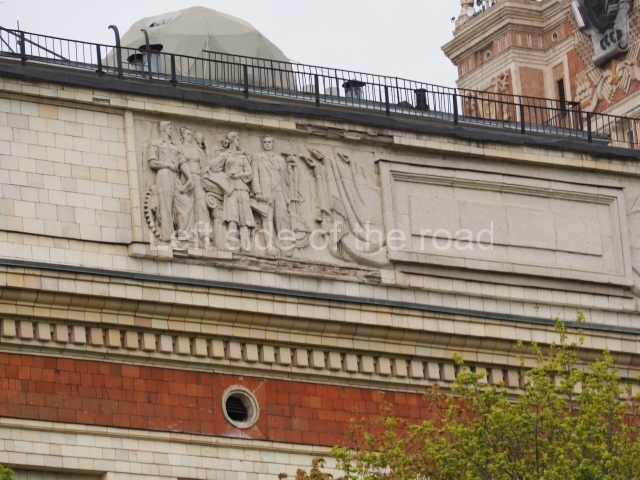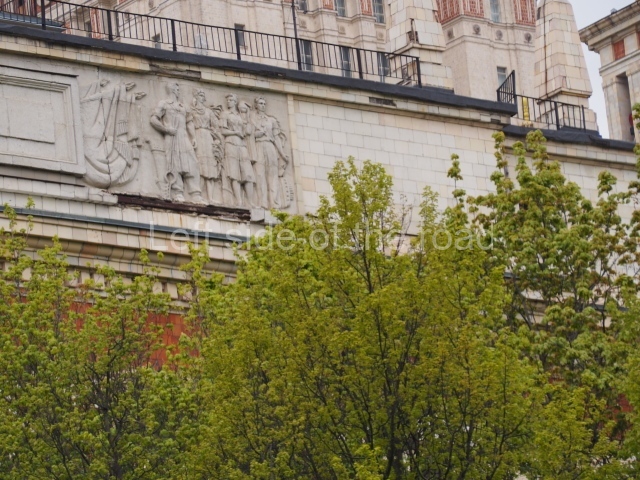Moscow State University
The main building of Moscow State University (Russian: Гла́вное зда́ние МГУ) a 239-metre (784 ft), 36-level (in its central part) skyscraper in Moscow, Russia. Its roof (182 metres (597 ft)) is topped by a 58-metre spire which ends with a 12-ton five-pointed star. Lateral towers are lower than the central one; two 18 and 9 storey dormitory wings define, with the central corpus of the complex, a cour d’honneur courtyard. Designed by Lev Rudnev as the headquarters of Moscow State University, it is the tallest of seven Moscow skyscrapers in the architectural style constructed between 1947 and 1953.
Among the statues which decorate the building is a sculpture by Vera Muchina representing a couple of students [which sit either side of the main entrance facing the city of Moscow]. The University premises cover around 1.6 square kilometres.
The Main Building of Moscow State University is not open to the general public.
The leading architect Boris Iofan bid for the skyscraper project in 1947 but the job was assigned to Lev Rudnev, because Iofan made the mistake of placing his draft skyscraper right on the edge of Sparrow Hills, a site which raised concerns over a potential landslide hazard. Rudnev had already built important edifices like the M. V. Frunze Military Academy (1932–1937) and the Marshals’ Apartments (Sadovaya-Kudrinskaya, 28, 1947), earning the esteem of the Communist Party. He set the building 800 meters away from the cliff. The chief of the engineers’ team was Vsevolod Nikolaevich Nasonov.
The main tower, which used over 40,000 tons of steel for its framework and 130,000 cubic metres of concrete, was inaugurated on September 1, 1953. At 240 metres tall, it was the 7th tallest building of the world as well as the tallest in Europe. Its European height record held until 1990 when it was surpassed by the Messeturm in Frankfurt, Germany. It was also, and still remains, the tallest educational building in the world.
Moscow University is probably the best known of Rudnev’s buildings, for which he was awarded the Stalin Prize in 1949. The University skyline inspired various buildings in the socialist countries, like the Palace of Culture and Science in Warsaw, and also the logo of 1980 Moscow Olympic Games.
Text above from Wikipedia.
This is a vast structure. From pictures you can get an idea that we are talking about a large building but it’s only when you’re up close and actually walk around the whole of the building you realise what a truly monumental building it is.
The entrance for students and others who have business in the building is actually the ‘back door’ the main entrance being further from any transport links and seems to have been neglected in recent years.
The actual main entrance is that which faces the river and the city of Moscow. This is presently (May 2024) undergoing a major renovation after years of neglect. This would appear to be in readiness for the 250th anniversary of the foundation of Moscow University. It doesn’t look like the renovation will not alter the original design and it is hoped that the statues and monuments that adorn the entrance will be retained and restored to their former glory.
This vast building has restricted access to those not connected to the University so the nature of the internal decoration is unknown.
Architect;
Lev Rudnev
Structural Engineer:
Vsevolod Nikolaevich Nasonov
Location;
1 Leninskie Gory
How to get there;
The nearest Metro station, about a 10-15 minute walk from the main University building, is Universitet, south west of the city centre on Line 1, the red one.
GPS;
55°42′11″N
37°31′49″E
Completed;
1953
Height;
239 m (784 ft)
Floors;
36








